A green roof, or living roof, is a transformative feature that merges architecture with nature, creating a sustainable and visually stunning home. By covering a roof with a waterproof membrane, a drainage system, and a growing medium, homeowners can cultivate a layer of living vegetation. This approach offers remarkable benefits, including improved insulation, which reduces heating and cooling costs, and enhanced stormwater management, which lessens the burden on local drainage systems. Beyond its practical advantages, a house with a green roof fosters biodiversity, improves air quality, and provides a unique aesthetic that beautifully integrates a building into its natural surroundings.
1. Modernist House With a Sloping Green Roof
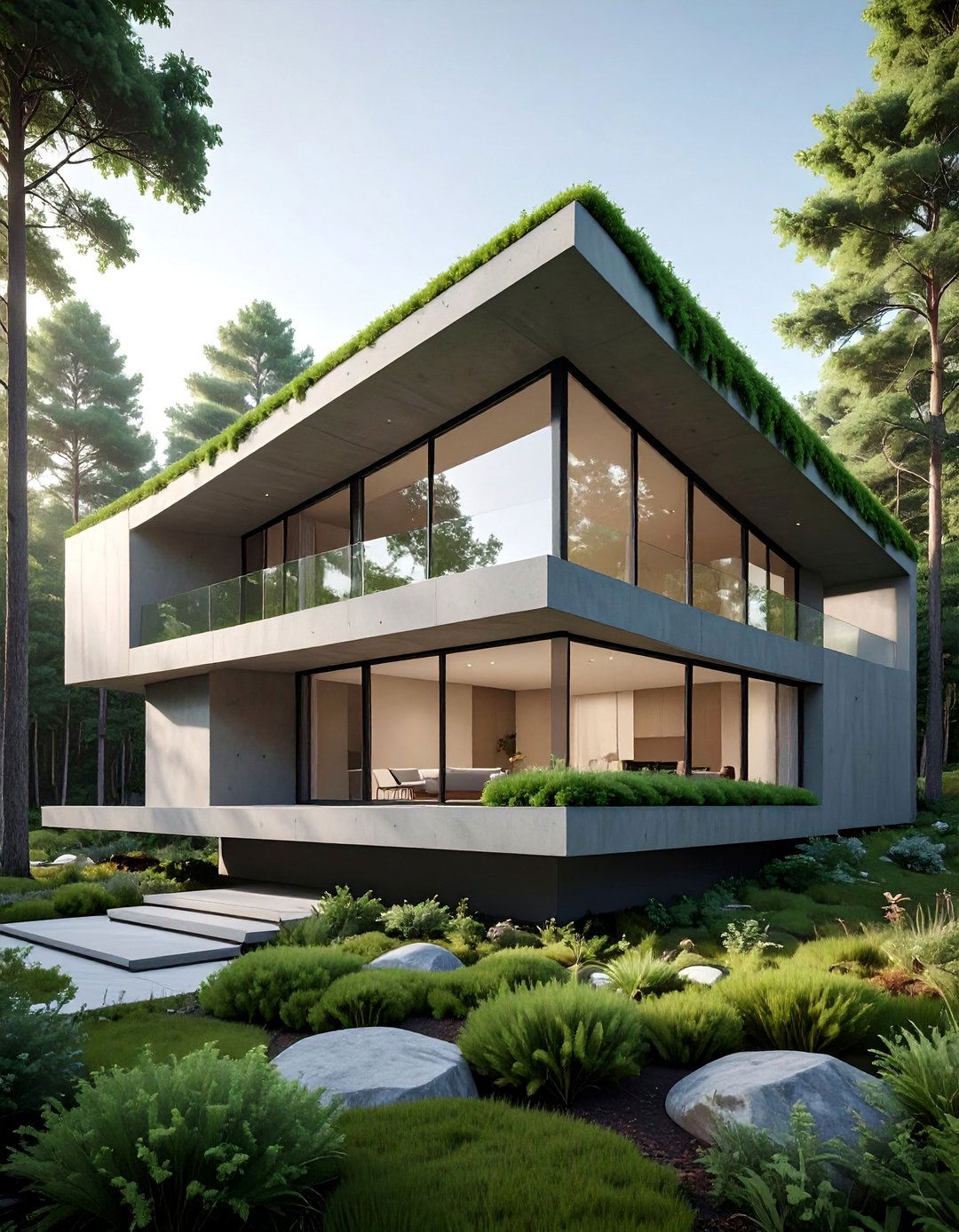
A sloping green roof adds a dramatic, organic line to the geometric precision of a modernist house. This design choice is not just for aesthetics; it facilitates excellent water drainage while supporting a vibrant layer of vegetation. Hardy succulents and low-growing grasses are ideal for angled surfaces, as their root systems provide stability and prevent soil erosion. This integration of a living element softens the often-stark materials of modernism, like concrete and glass, creating a harmonious balance between the built and natural worlds. The roof becomes a cascading green waterfall, a functional piece of art that enhances energy efficiency and curb appeal simultaneously.
2. Urban Townhouse With a Flat Green Roof
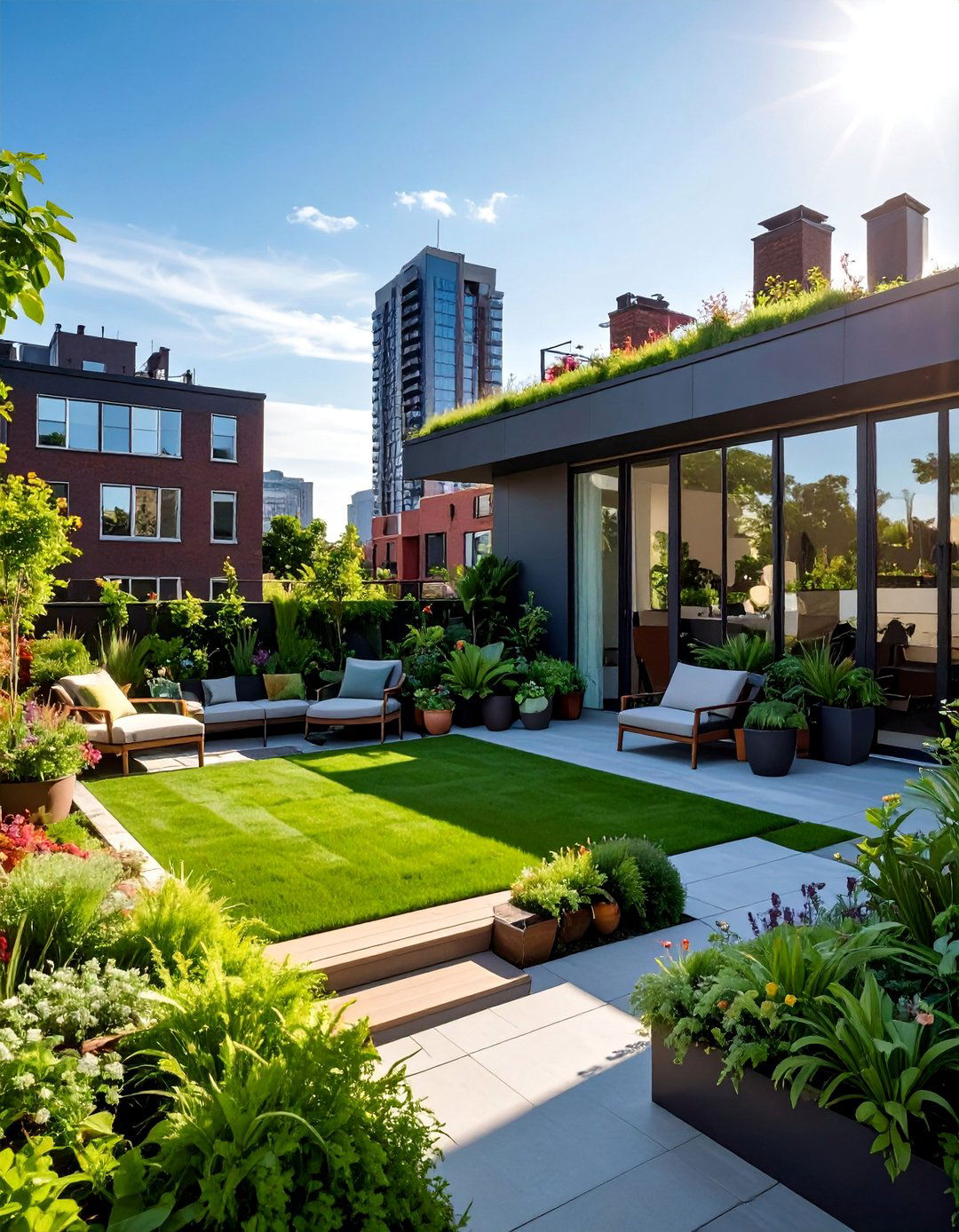
For urban dwellings where garden space is a luxury, a flat green roof transforms an unused surface into a private green oasis. A townhouse crowned with a living roof offers residents a secluded spot for relaxation or small-scale gardening, featuring everything from ornamental grasses to edible herbs. This elevated greenspace helps mitigate the urban heat island effect, cooling the building and the surrounding air. It also provides a crucial habitat for pollinators like bees and butterflies in a dense city environment. This sustainable feature significantly improves the quality of urban life by reintroducing a touch of nature into a concrete landscape.
3. Rustic Cabin With a Wildflower Meadow Green Roof
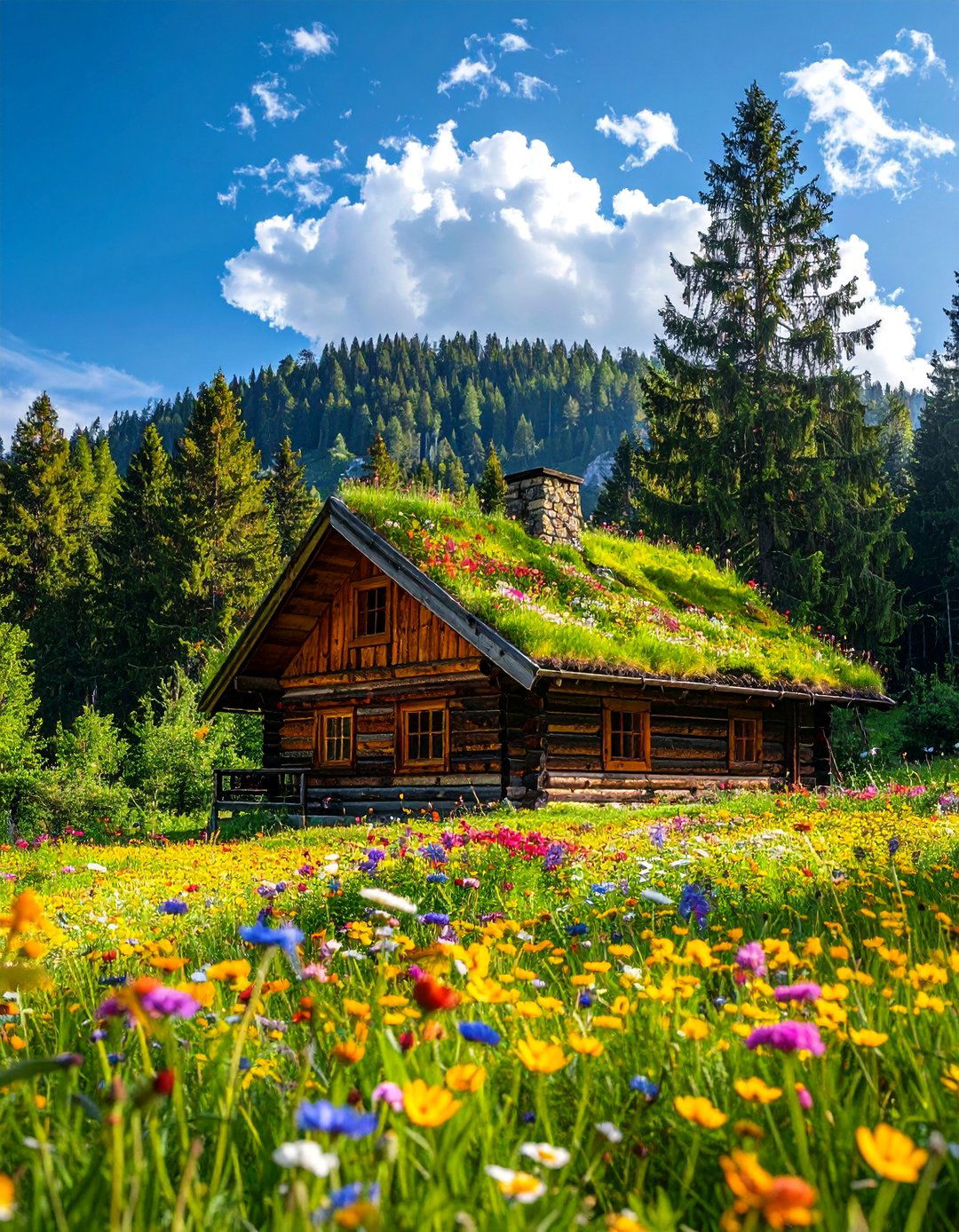
Imagine a rustic log cabin nestled in the woods, its roof a riot of color from a thriving wildflower meadow. This type of extensive green roof uses a shallow layer of soil to support a diverse mix of native grasses and wildflowers, requiring minimal maintenance once established. The effect is a structure that seems to grow directly from the landscape, blurring the lines between the home and its wilderness setting. This biodiverse green roof attracts local wildlife, supports pollinator populations, and provides exceptional insulation, keeping the cabin cozy in winter and cool in summer, perfectly embodying a self-sufficient, back-to-nature lifestyle.
4. Coastal Home With a Salt-Tolerant Green Roof
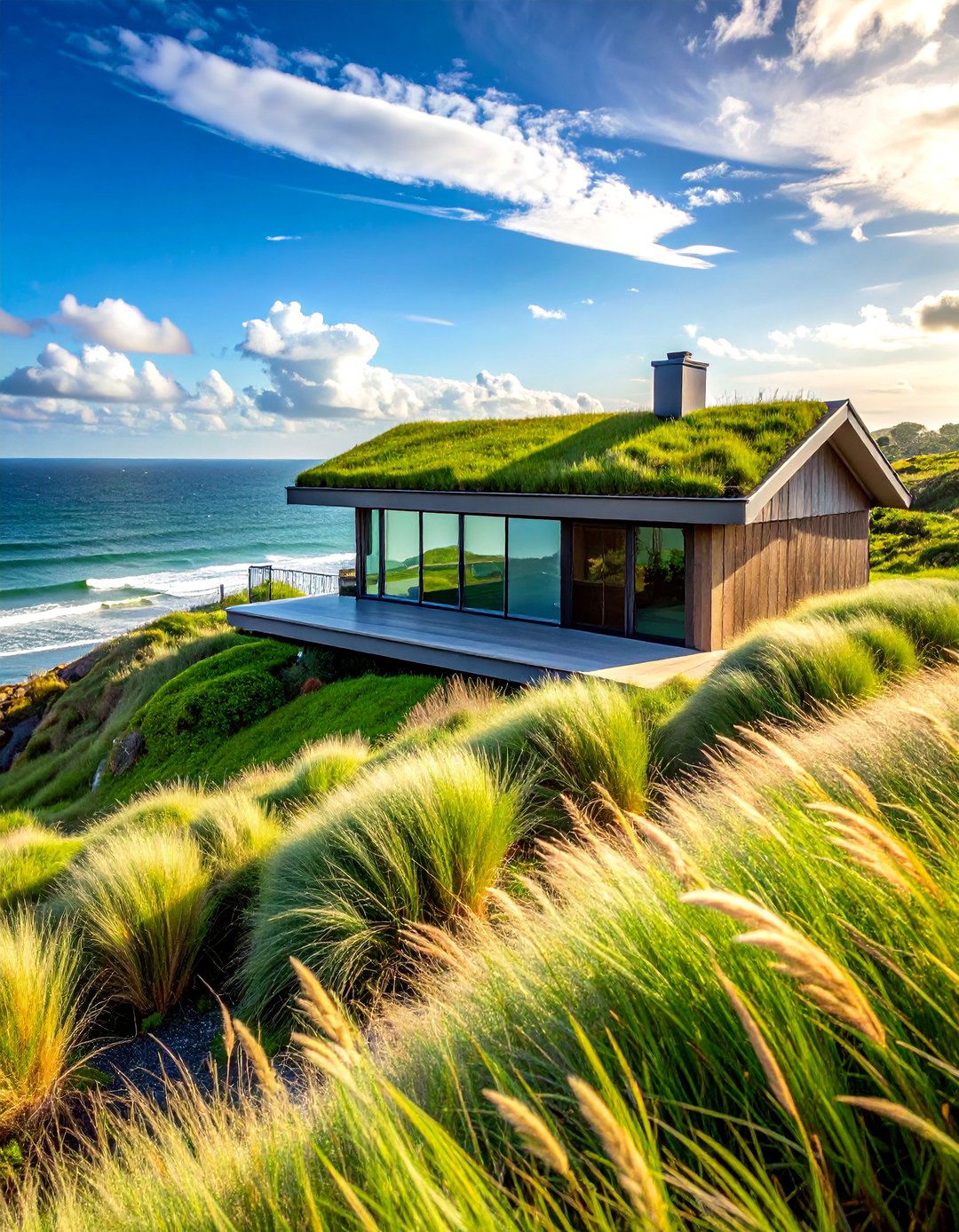
Coastal homes face unique environmental challenges, including salt spray and high winds, but a specially designed green roof can thrive in these conditions. By selecting salt-tolerant plant species like coastal succulents, hardy grasses, and resilient groundcovers, the roof becomes a durable and living shield. This green layer protects the roofing materials from the corrosive effects of sea air while providing superior insulation against the intense sun. It also helps manage rainwater runoff, a critical function in fragile coastal ecosystems. The result is a home that is both protected from and beautifully integrated into its stunning seaside environment.
5. Earth-Sheltered House With a Continuous Green Roof
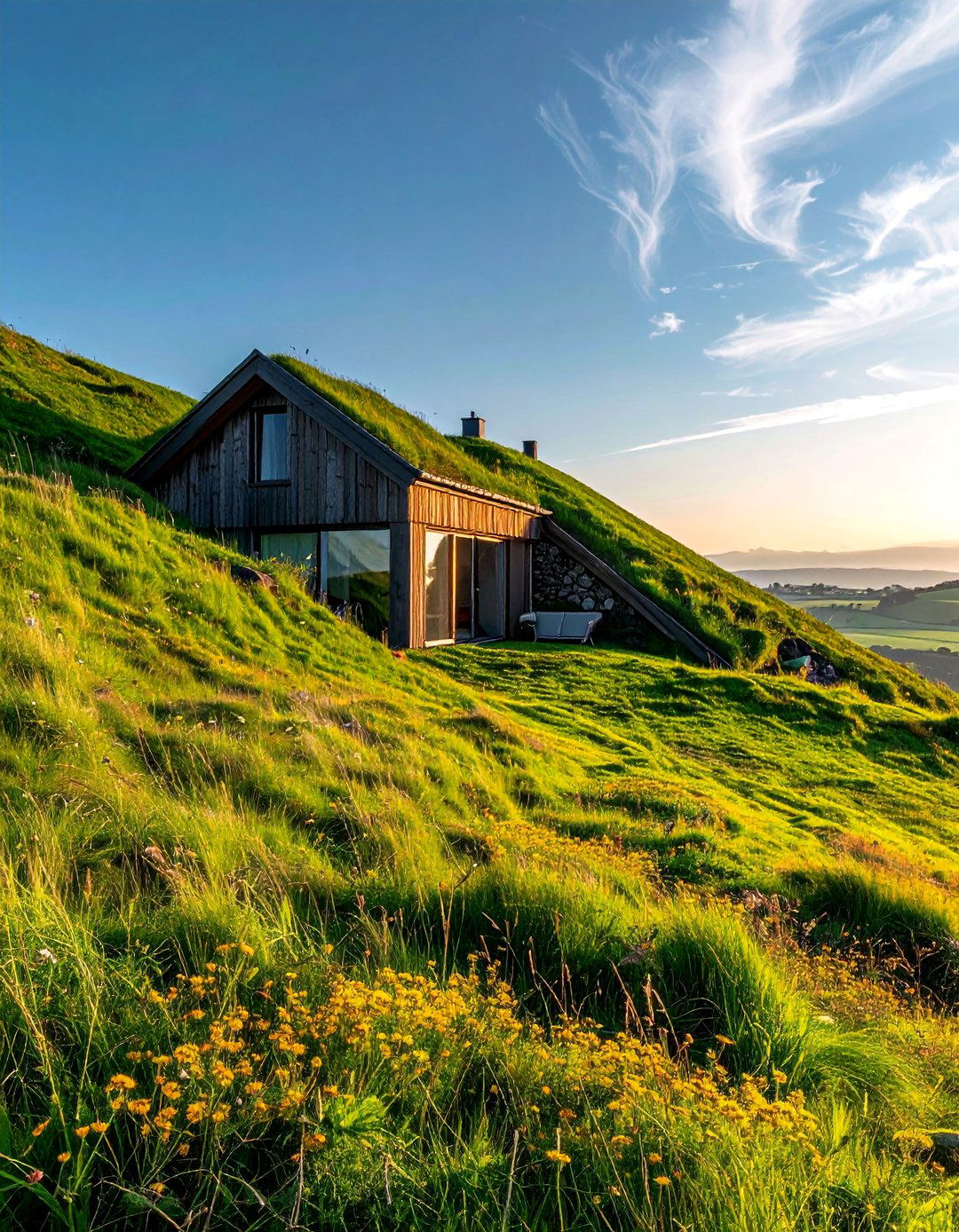
An earth-sheltered house, built into the side of a hill, achieves ultimate integration with the landscape when topped with a continuous green roof. This design makes the roof an extension of the surrounding meadow or hillside, rendering the home nearly invisible from certain angles. The earth and vegetation provide unparalleled natural insulation, drastically reducing energy needs for heating and cooling. This type of home offers a quiet, protected living space that maintains a stable indoor temperature year-round. A continuous green roof on an earth-sheltered house is the pinnacle of passive, sustainable design, creating a dwelling that truly works in harmony with the planet.
6. Scandinavian-Style House With a Minimalist Green Roof
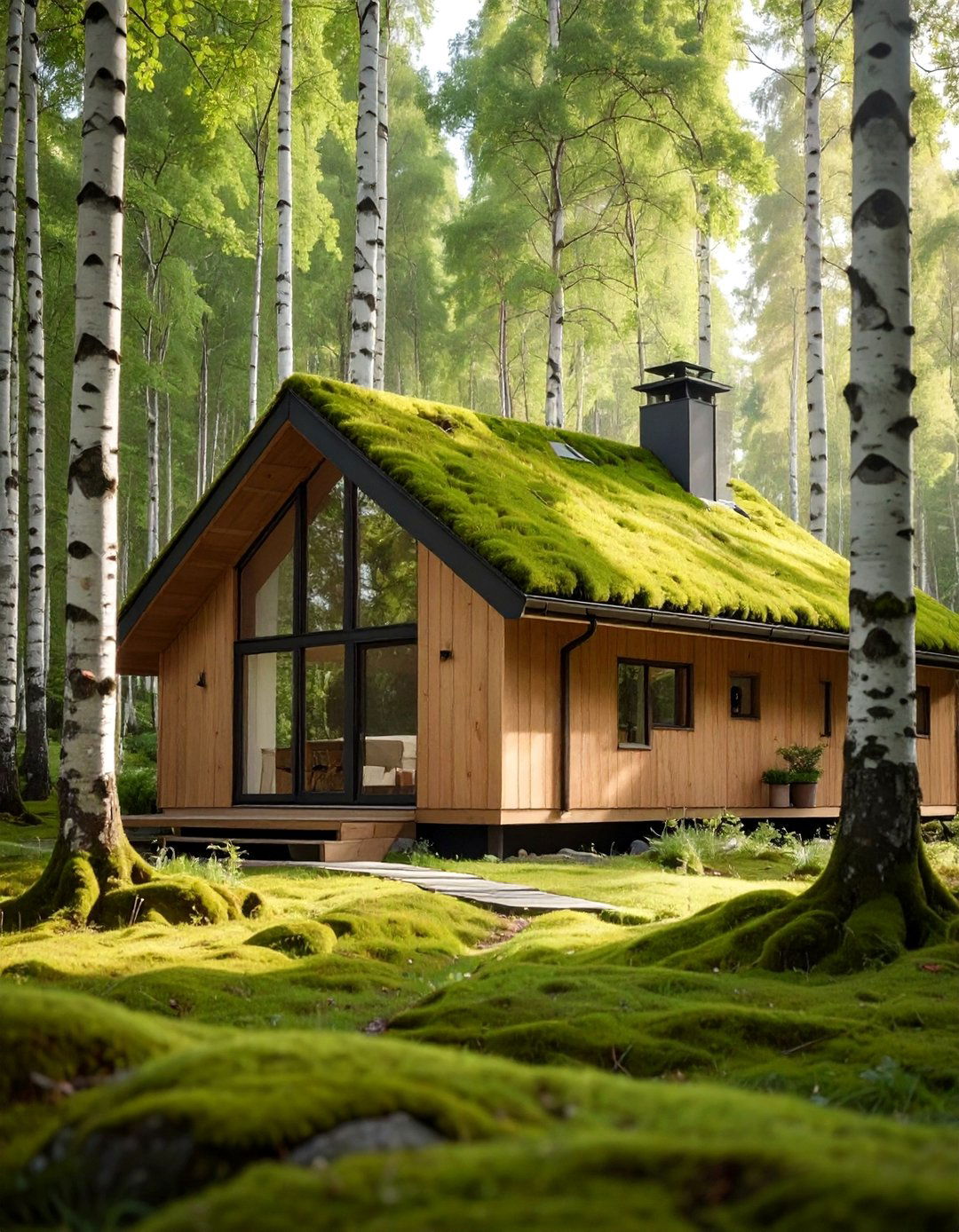
Characterized by clean lines, natural materials, and functional simplicity, Scandinavian design pairs perfectly with a minimalist green roof. Typically planted with a uniform carpet of a single sedum species or moss, this roof style enhances the home’s understated elegance. The subtle texture and consistent green hue complement the light wood and large windows common in Scandinavian architecture. This living roof isn't just about looks; it contributes to the ethos of sustainability central to this design philosophy. It provides excellent insulation, a key benefit in Nordic climates, while maintaining a connection to nature that is both visually calming and environmentally responsible.
7. A-Frame House With a Steeply Pitched Green Roof
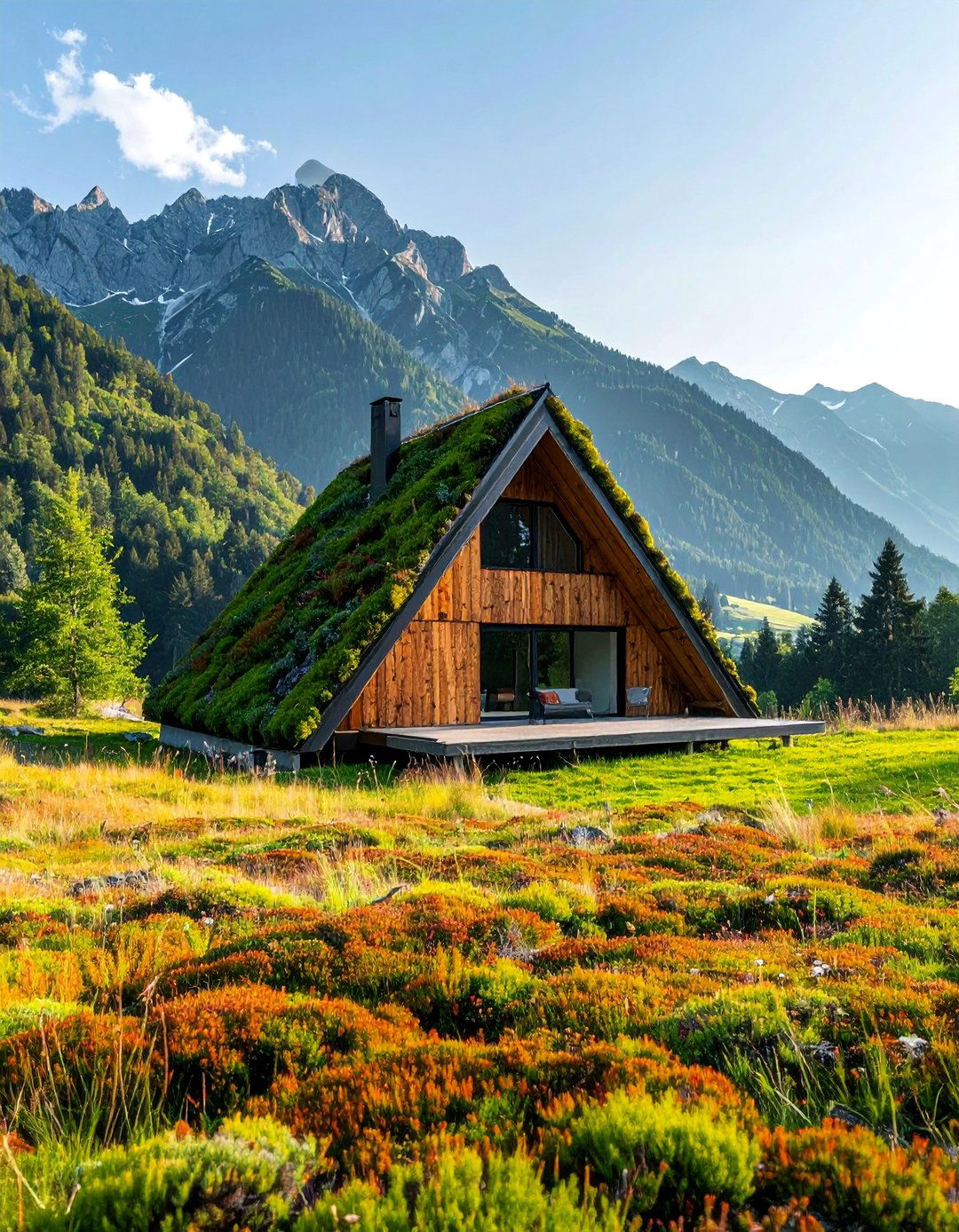
An A-frame house is already an iconic architectural statement, and adding a steeply pitched green roof elevates its unique charm. This application requires specialized engineering to secure the growing medium and plants on a sharp incline, often using grid systems or geotextiles. The visual effect is stunning, with two green triangles rising to meet the sky, making the structure look like a natural landform. Low-profile, drought-tolerant plants like sedums and thyme are essential to minimize maintenance and weight. This bold design choice transforms the A-frame into a sustainable masterpiece, maximizing insulation and creating an unforgettable visual fusion of geometry and ecology.
8. Contemporary Desert House With a Succulent Green Roof
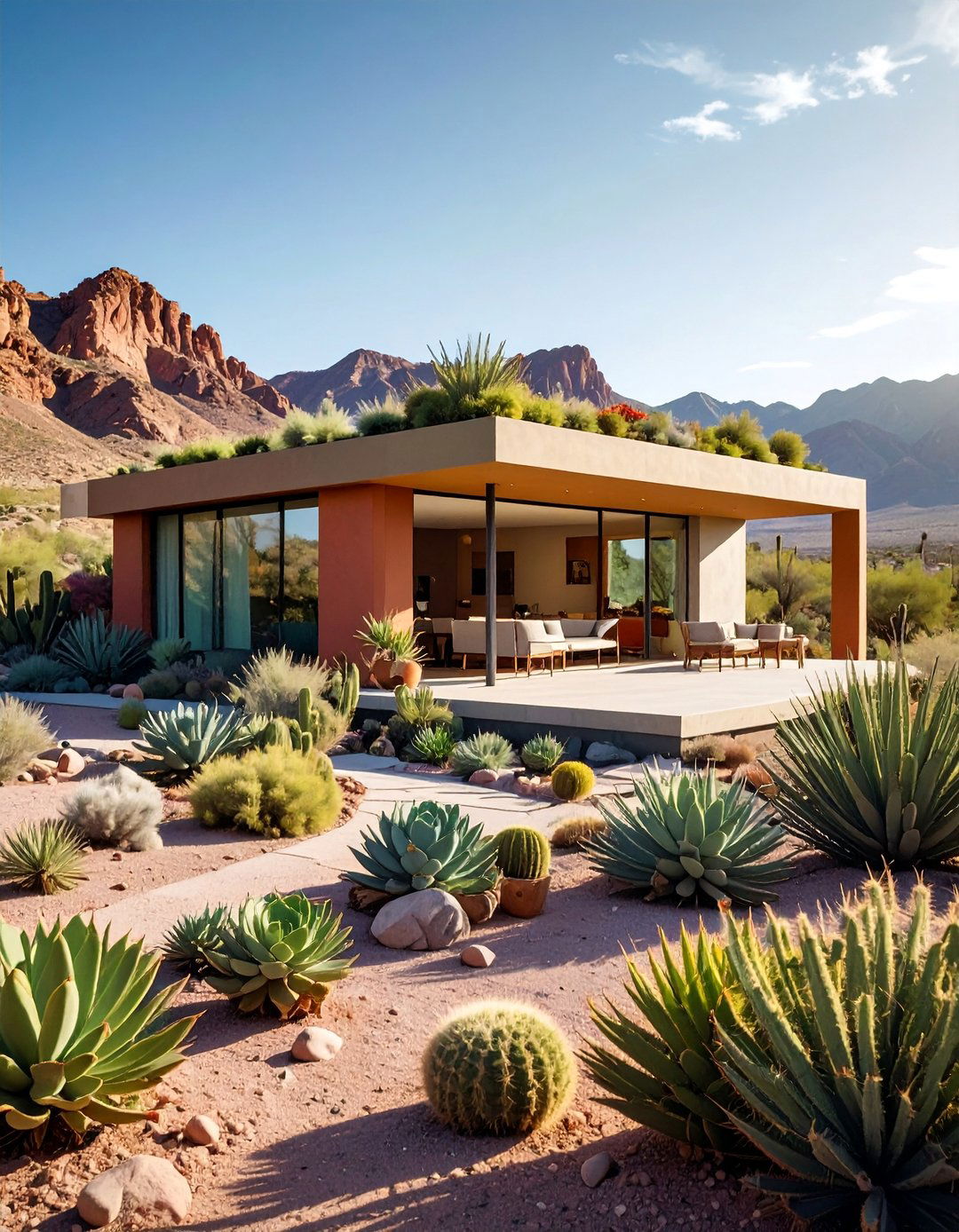
In an arid desert climate, a green roof might seem counterintuitive, but a design using native succulents and cacti can be highly effective. These drought-tolerant plants are perfectly adapted to intense sun and minimal water, creating a living roof that is both sustainable and regionally appropriate. This succulent green roof provides a critical thermal barrier, reflecting solar radiation and keeping the interior of the contemporary desert house significantly cooler. It also helps to blend the sharp, modern lines of the home into the rugged desert landscape, using the very plants of the surrounding environment to create a seamless and eco-friendly architectural feature.
9. Suburban Home With a Pollinator-Friendly Green Roof
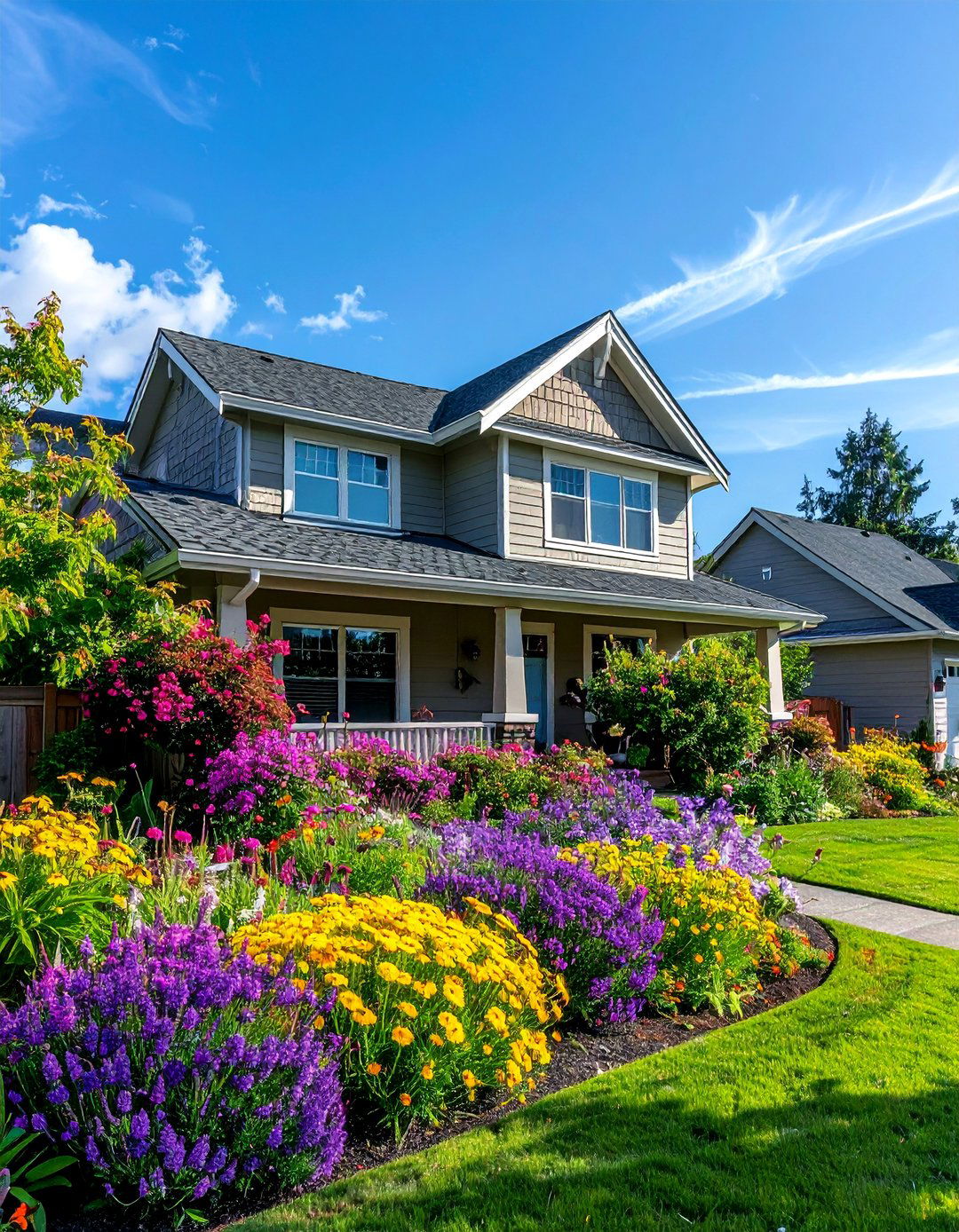
A standard suburban home can be transformed into an ecological haven with a pollinator-friendly green roof. By planting a mix of native flowering species that bloom at different times, the roof becomes a season-long buffet for bees, butterflies, and other vital insects. This biodiverse habitat helps to counteract the loss of natural spaces in suburban developments, creating ecological corridors for wildlife. Beyond its environmental benefits, this vibrant, flowering roof adds unique and changing beauty to the home. Homeowners contribute directly to local ecosystem health while enjoying reduced energy bills and a deeper connection to the natural world just above their heads.
10. Multi-Level House With Terraced Green Roofs
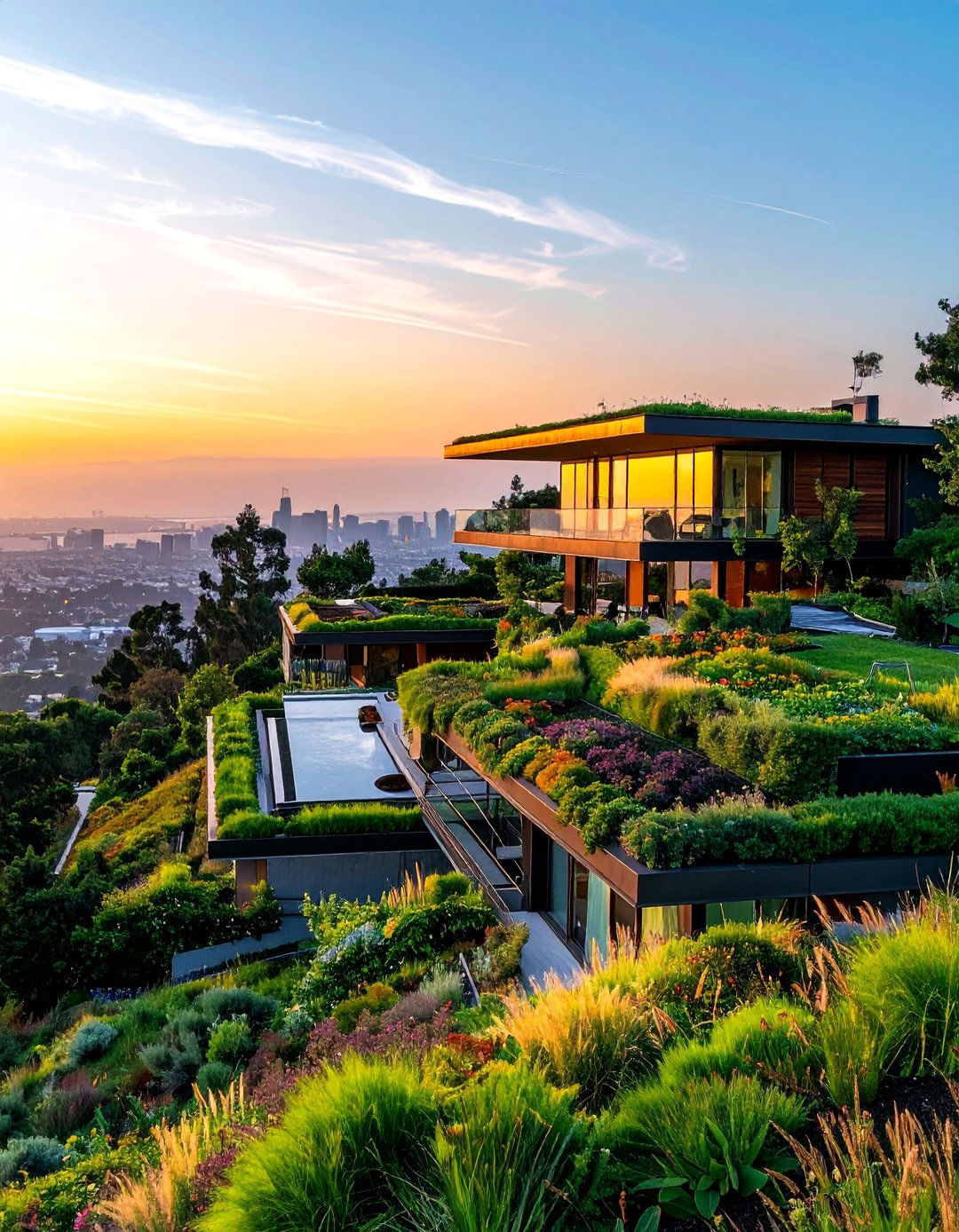
A multi-level house offers a fantastic opportunity for creating a series of terraced green roofs, turning each tier into a distinct garden space. This cascading design breaks up the home's mass, allowing it to settle more gracefully into its surroundings. Each terrace can be designed for a different purpose: one level might feature a lush lawn for lounging, another could be an intensive vegetable garden, and a third might be a simple sedum-covered area for maximum insulation. This approach not only provides exceptional environmental benefits but also creates multiple outdoor living areas with stunning views, maximizing the home's functional and aesthetic potential.
11. Japanese-Inspired House With a Moss Green Roof
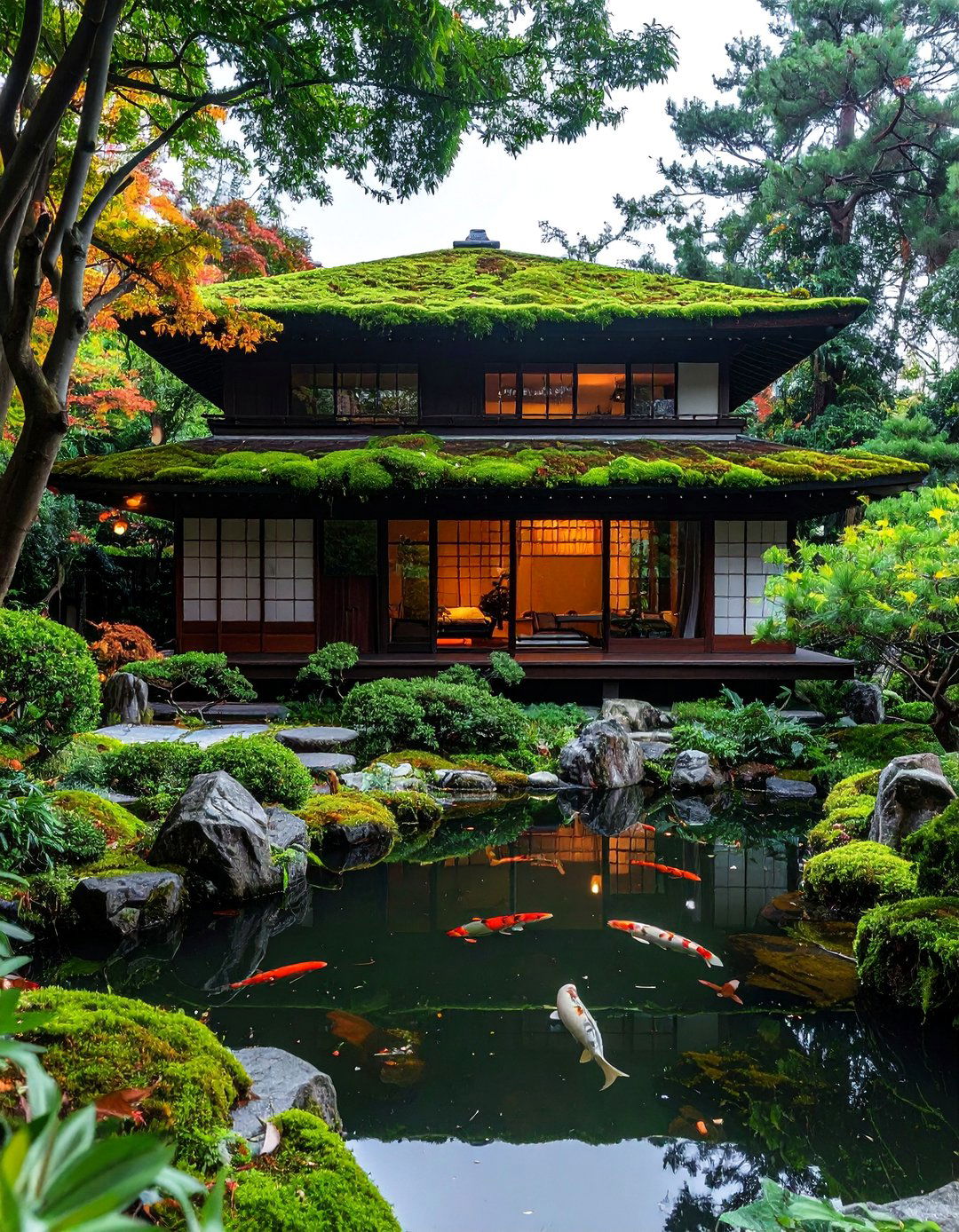
Reflecting the principles of tranquility and harmony with nature, a Japanese-inspired house is perfectly complemented by a serene moss green roof. Mosses thrive in shady, damp conditions and create a soft, velvety carpet that evokes the feeling of an ancient forest floor. This type of green roof is lightweight and requires minimal soil depth, making it suitable for delicate architectural structures. The uniform, deep green texture aligns with the Zen aesthetic of simplicity and natural beauty. This living roof helps maintain a cool and peaceful interior atmosphere while creating a powerful visual connection to the contemplative garden spaces often found in Japanese design.
12. Industrial Loft With an Edible Green Roof Garden
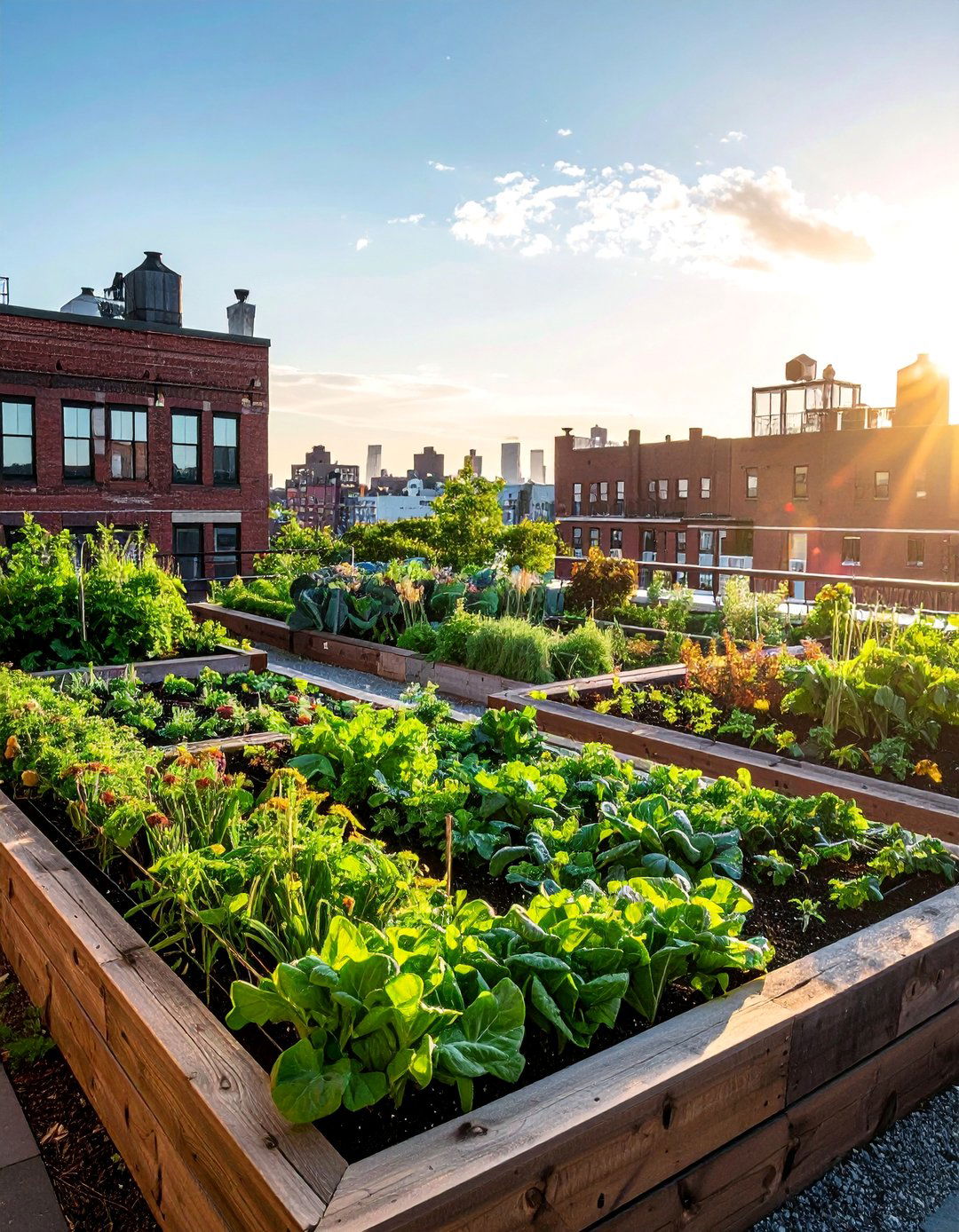
Transforming the flat roof of an industrial loft into an edible garden is a prime example of urban agriculture and sustainable living. This intensive green roof can support deeper soil, allowing for the cultivation of vegetables, herbs, and even small fruit trees. It provides the residents with fresh, organic produce right at their doorstep, reducing food miles and promoting a healthier lifestyle. The garden also serves as a vibrant social space for residents, offering a green escape from the city bustle. This functional green roof significantly insulates the building, manages stormwater, and turns a once-barren industrial space into a productive and beautiful urban farm.
13. Historic Brick House With a Concealed Green Roof
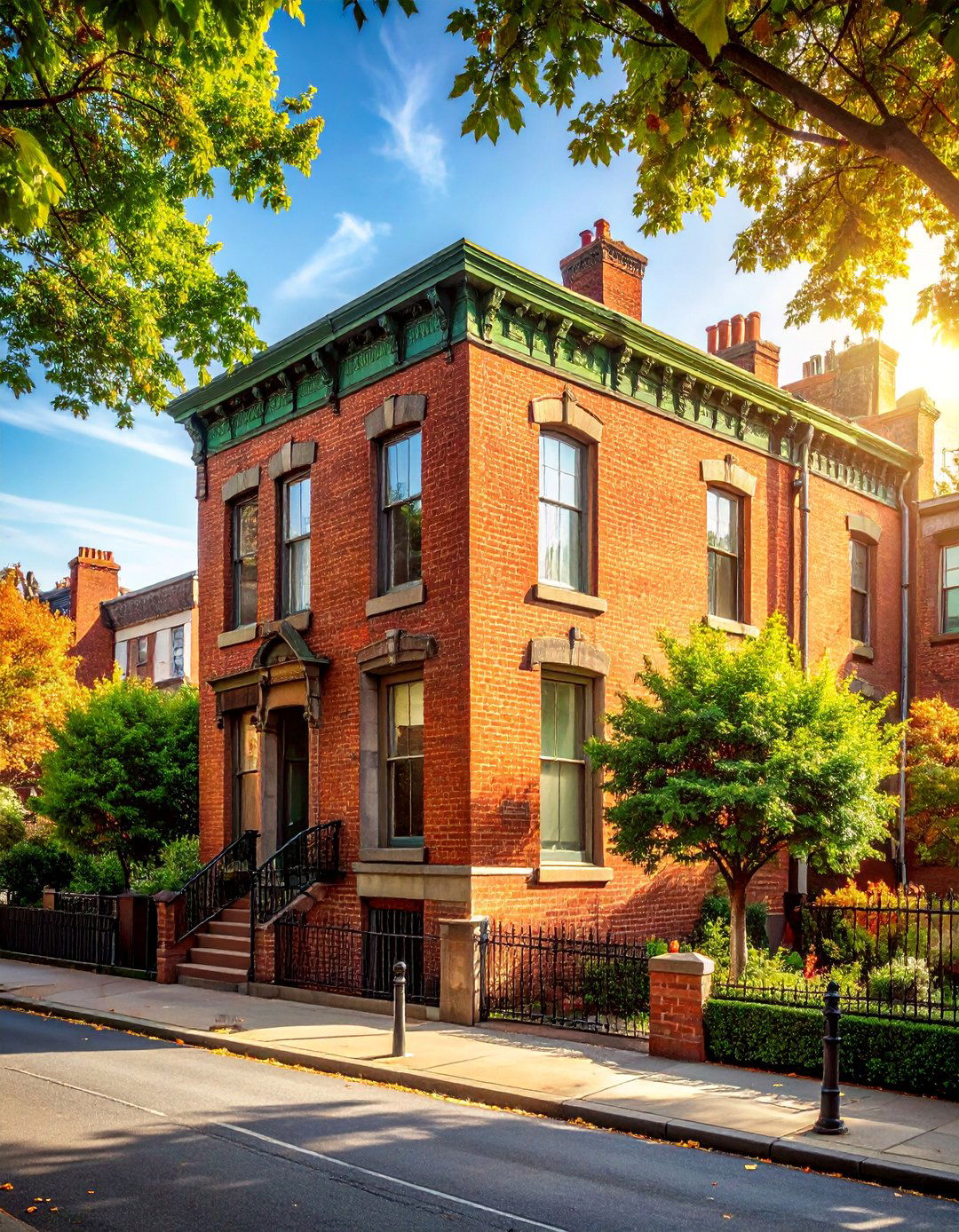
For a historic brick house, maintaining its traditional character is paramount, yet incorporating sustainable features is often a goal. A concealed green roof, set back from the roofline and hidden behind a parapet wall, offers the perfect solution. This modern addition provides all the energy-saving and environmental benefits without altering the building’s historic facade. From street level, the home’s classic appearance remains untouched, while the flat roof surface works efficiently to insulate the structure and manage rainwater. This thoughtful approach allows for a seamless blend of historic preservation and contemporary green technology, proving that sustainability can respect the past.
14. Prefabricated Home With a Modular Green Roof System
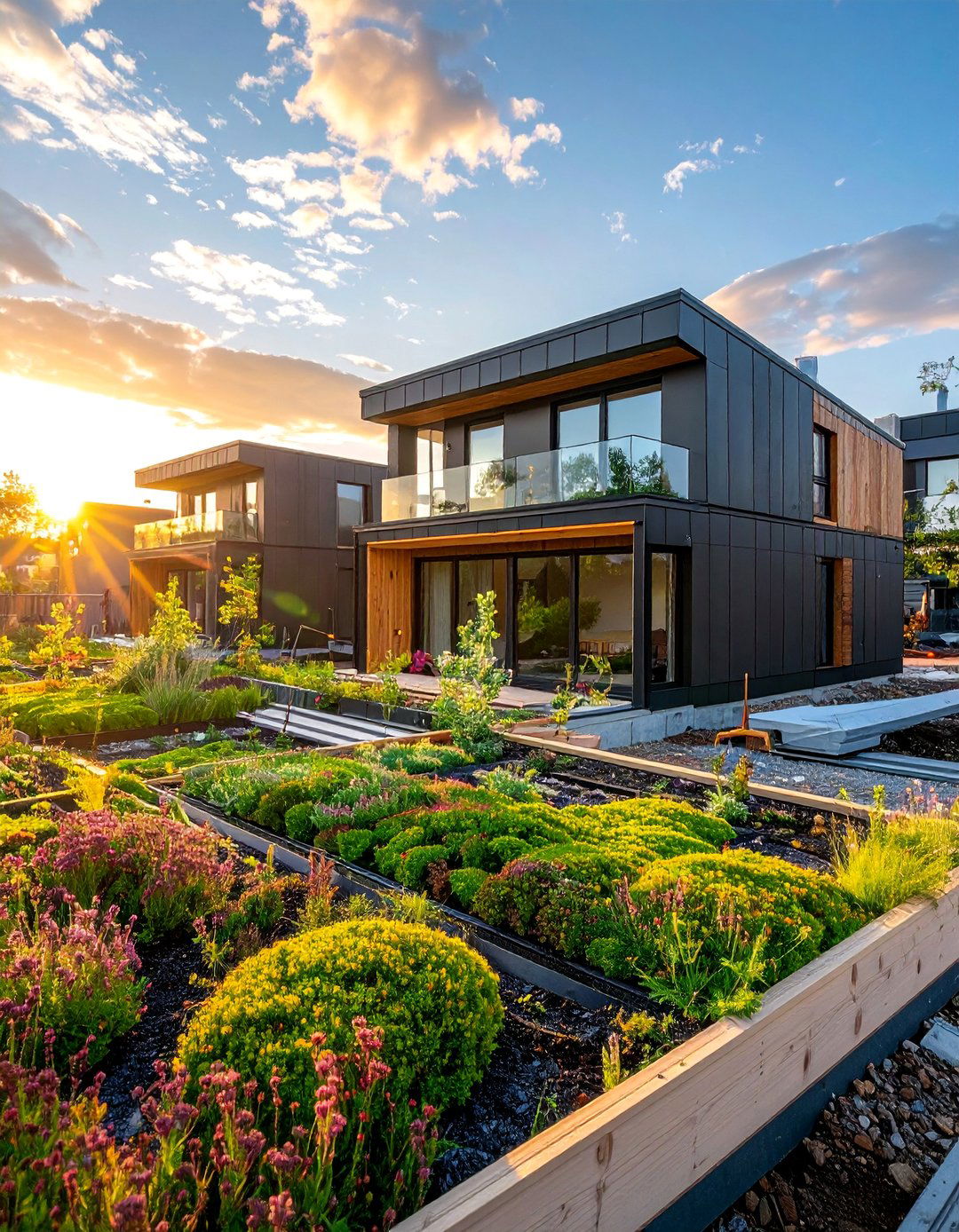
Prefabricated homes are known for their efficiency and modern design, and a modular green roof system is an ideal complement to this construction method. These systems consist of pre-planted trays that can be easily installed on a flat or low-sloped roof, making the process quick and straightforward. This approach allows homeowners to enjoy the benefits of a living roof without the complexities of a custom installation. The modular trays can be arranged to create interesting patterns and are simple to maintain or replace. This pairing of prefab construction and modular green roofing represents a highly accessible and scalable path to sustainable homeownership.
15. Tiny House With a Lightweight Sedum Green Roof
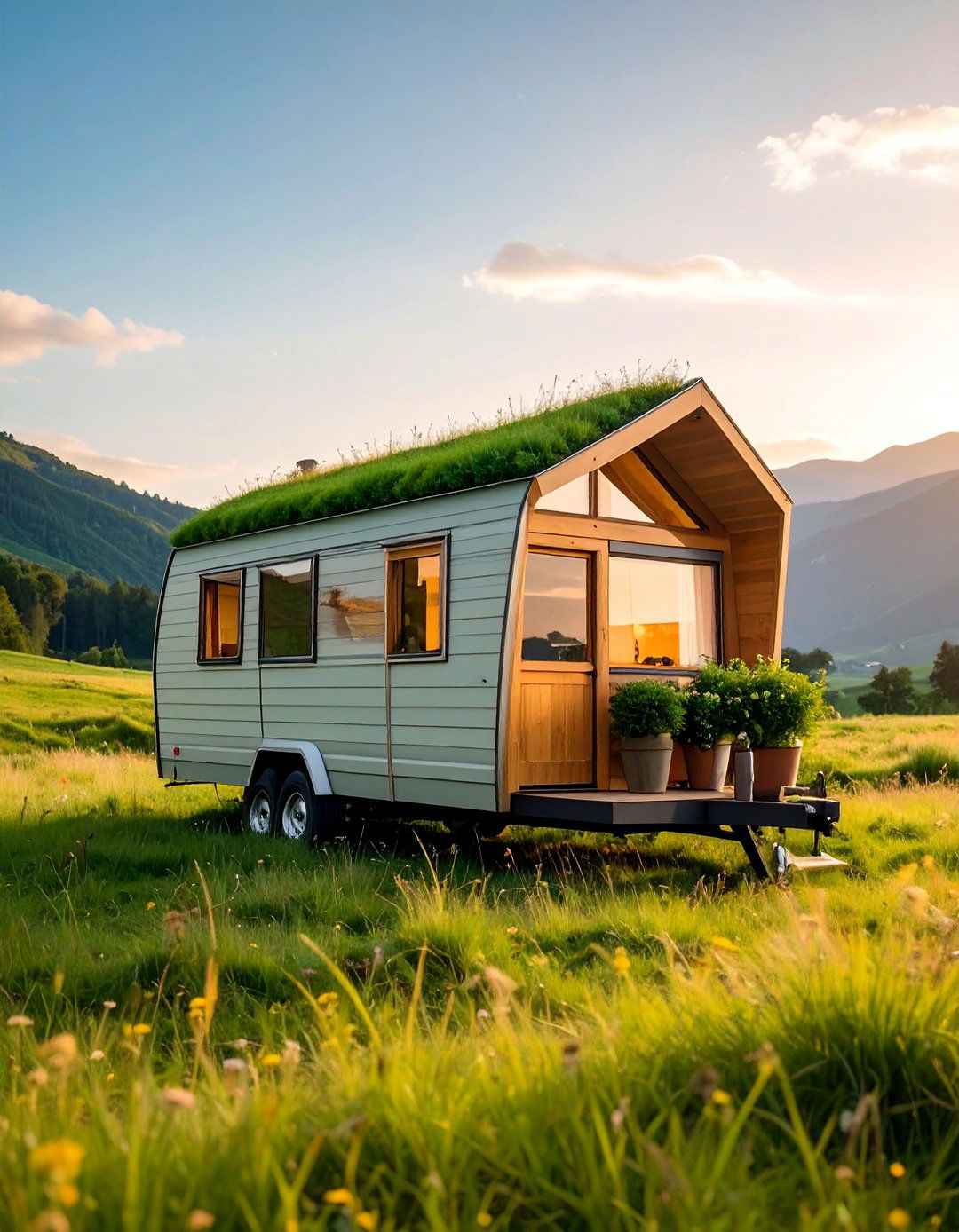
Even the smallest of homes can embrace sustainability with a lightweight sedum green roof. Tiny houses, often designed with mobility and efficiency in mind, benefit immensely from the added insulation and ecological footprint reduction. A simple, extensive system using drought-tolerant sedums adds minimal weight to the structure while providing significant thermal regulation. This keeps the compact interior comfortable without relying heavily on heating or air conditioning. The green roof also helps the tiny house blend into natural settings, whether it’s parked in a backyard or a remote landscape, enhancing its charming and eco-conscious appeal.
16. Mediterranean Villa With a Drought-Resistant Green Roof
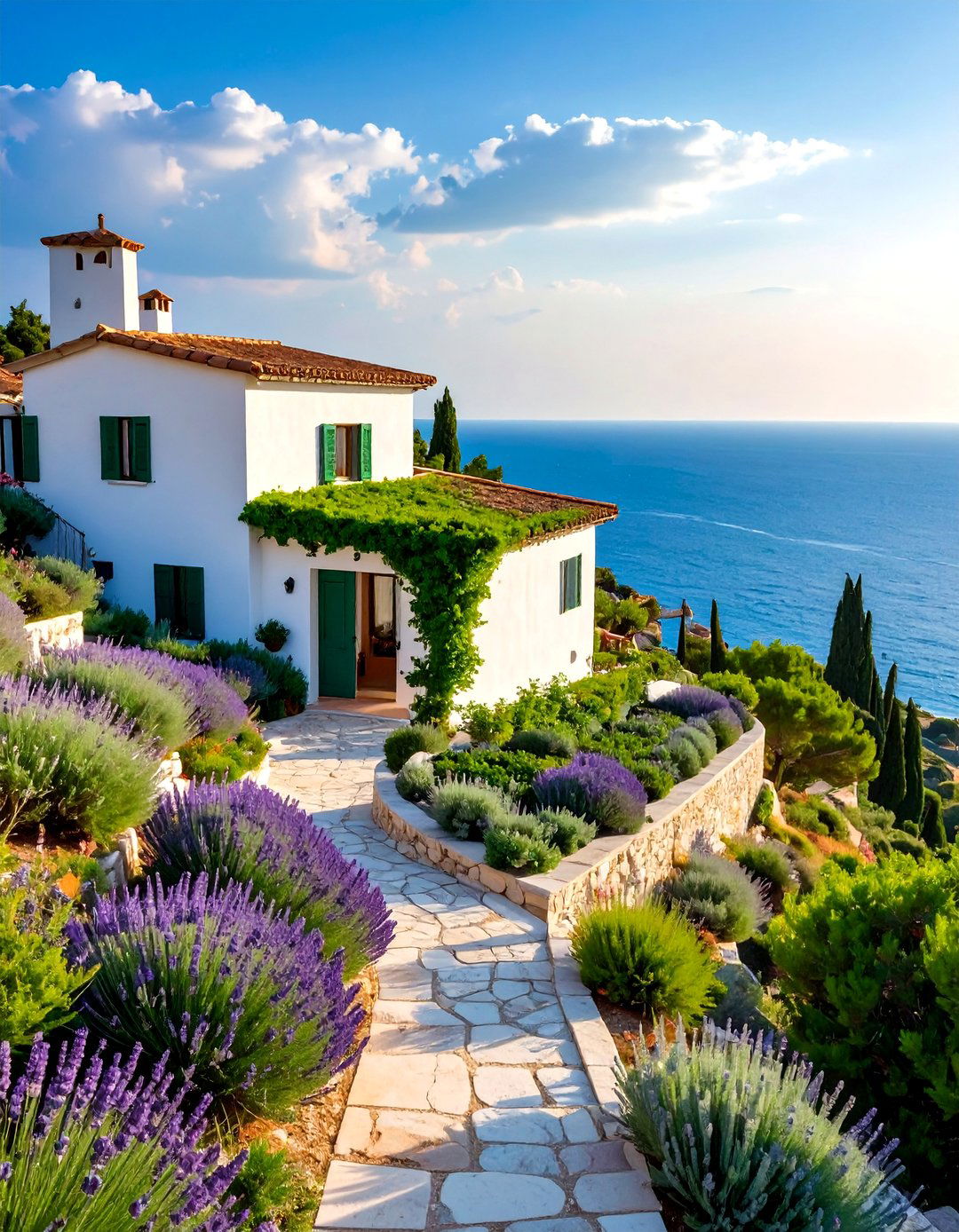
A Mediterranean villa, with its classic stucco walls and terracotta tiles, can be updated for sustainability with a drought-resistant green roof. Planted with hardy herbs like rosemary and lavender, as well as native grasses and succulents, this roof can withstand hot, dry summers while adding to the home's rustic charm. The vegetation provides a natural cooling effect, reducing the need for air conditioning and lowering energy consumption. The fragrant herbs can also be harvested for culinary use. This living roof design respects the regional climate and aesthetic, enhancing the villa's connection to its sun-drenched landscape while improving its environmental performance.
17. Mountain Chalet With an Alpine Green Roof
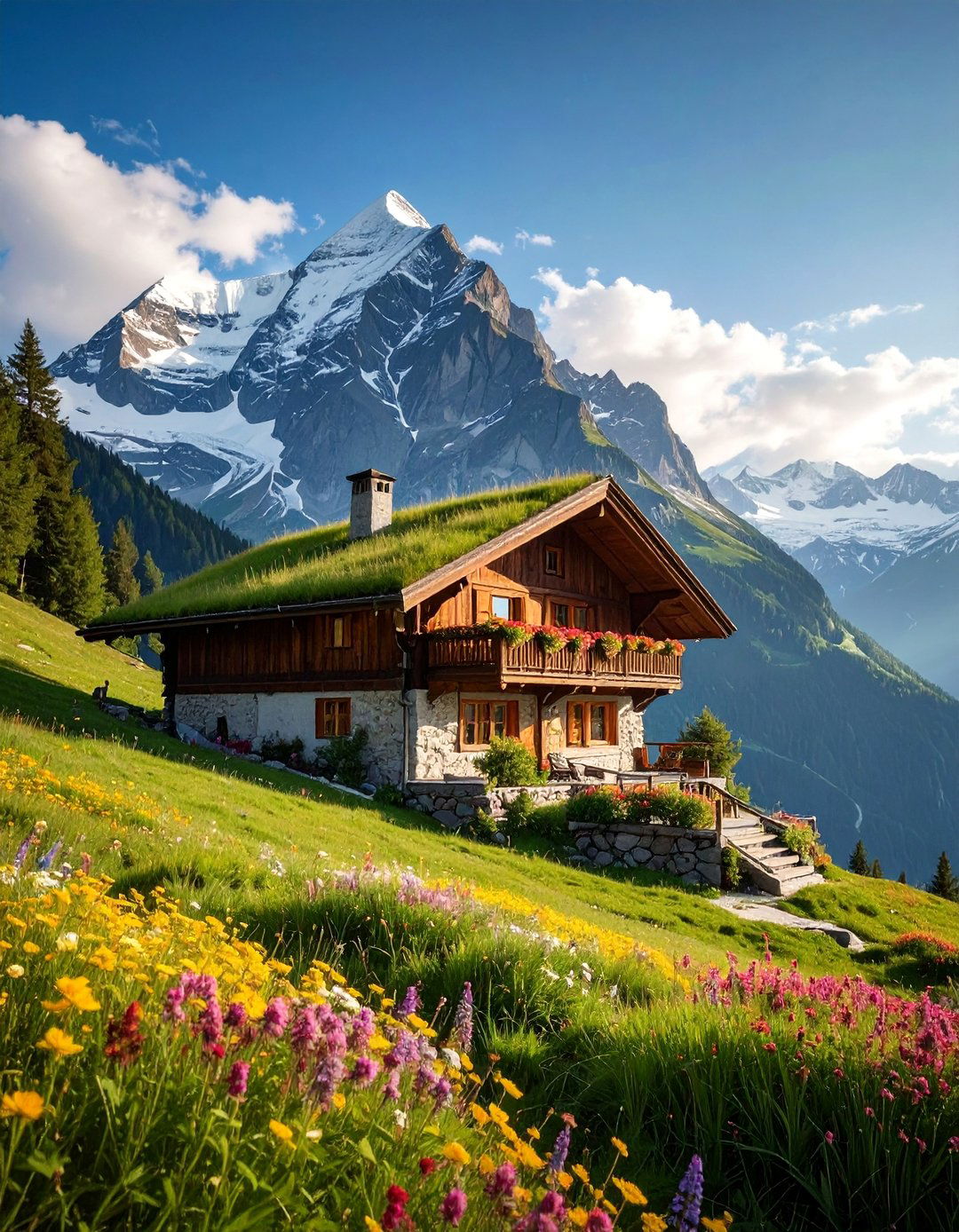
High in the mountains, a chalet with an alpine green roof appears as a natural extension of the surrounding meadows. This type of roof is planted with hardy alpine species that are adapted to withstand cold temperatures, snow, and high-altitude sun. The vegetation provides an extra layer of insulation, crucial for keeping the chalet warm during harsh winters, and helps control snowmelt runoff in the spring. Visually, the roof changes with the seasons, from green in the summer to snow-covered in the winter, always in harmony with the majestic mountain scenery. This design is a testament to building with nature, not against it.
18. Biophilic House With an Integrated Green Roof and Walls
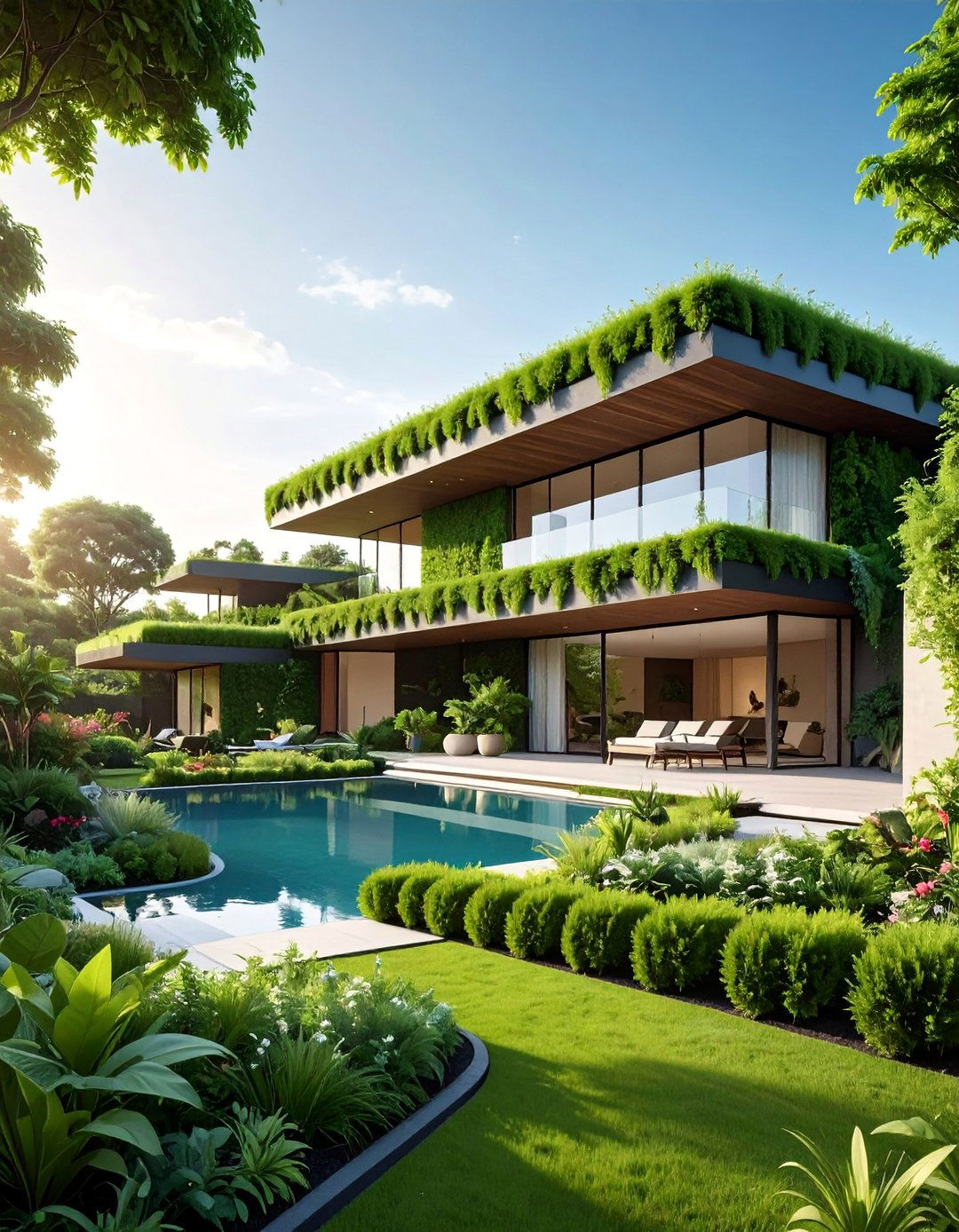
A biophilic house is designed to maximize the connection between occupants and nature, and an integrated system of green roofs and living walls is a core feature. The green roof seamlessly transitions into vertical gardens that drape down the sides of the building, creating a continuous cloak of vegetation. This immersive design purifies the air, provides habitat for wildlife, and offers incredible thermal insulation. The home becomes a living, breathing entity, with nature present on every surface. This holistic approach blurs the boundary between inside and out, fostering a sense of well-being and creating a truly sustainable and restorative living environment.
19. Curved Roof House With a Flowing Green Roof
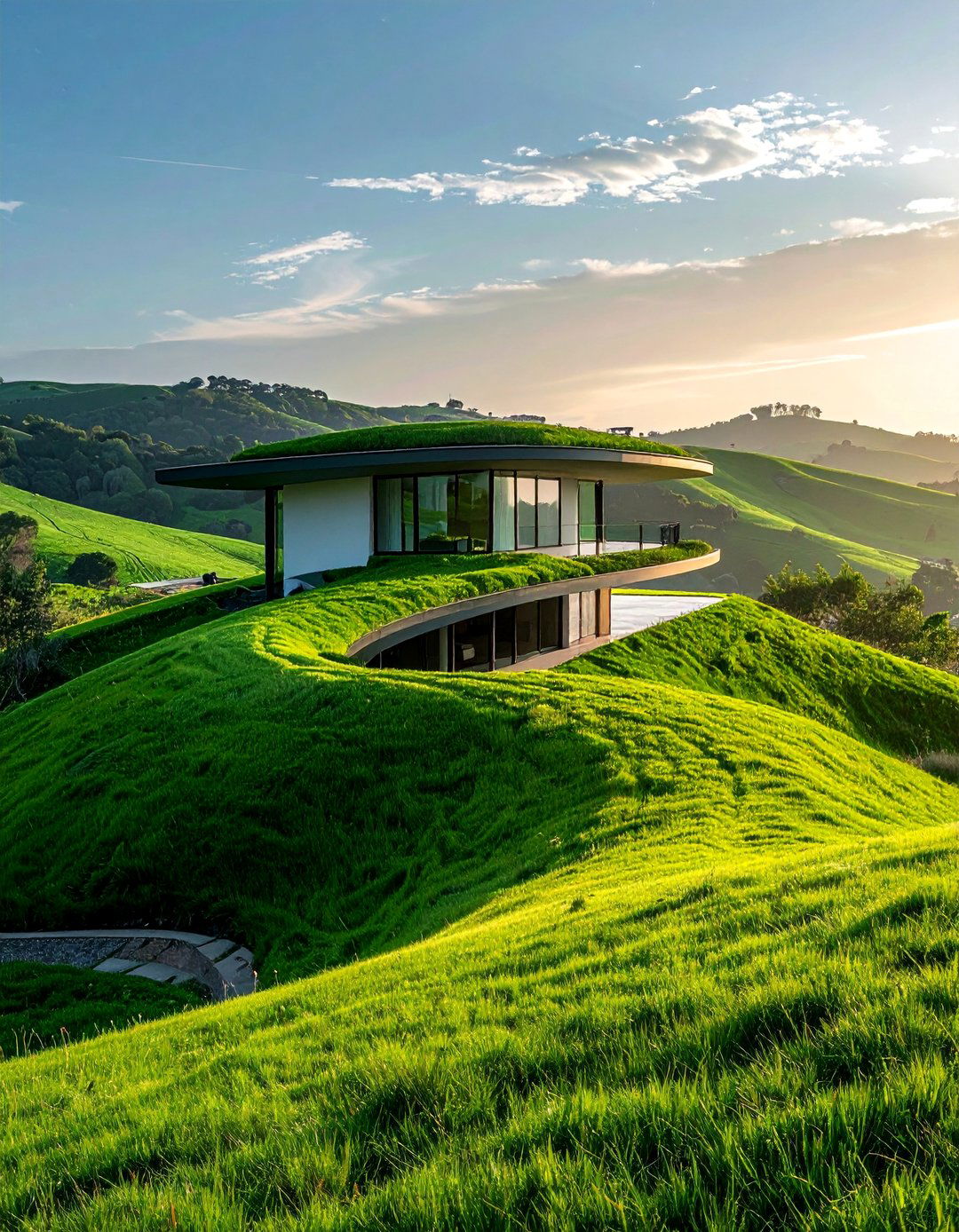
A house with a curved roof is an architectural marvel, and covering its organic form with a flowing green roof creates a breathtaking effect. The vegetation accentuates the structure's graceful lines, making it appear like a rolling hill or a gentle wave in the landscape. This design requires a flexible and robust system to hold the growing medium and plants in place along the changing contours. The result is a home that is both artistically expressive and highly energy-efficient. The seamless green surface enhances the building's aerodynamic properties and provides consistent insulation across its entire unique form, merging innovative design with ecological responsibility.
20. House With a Green Roof Featuring Integrated Solar Panels
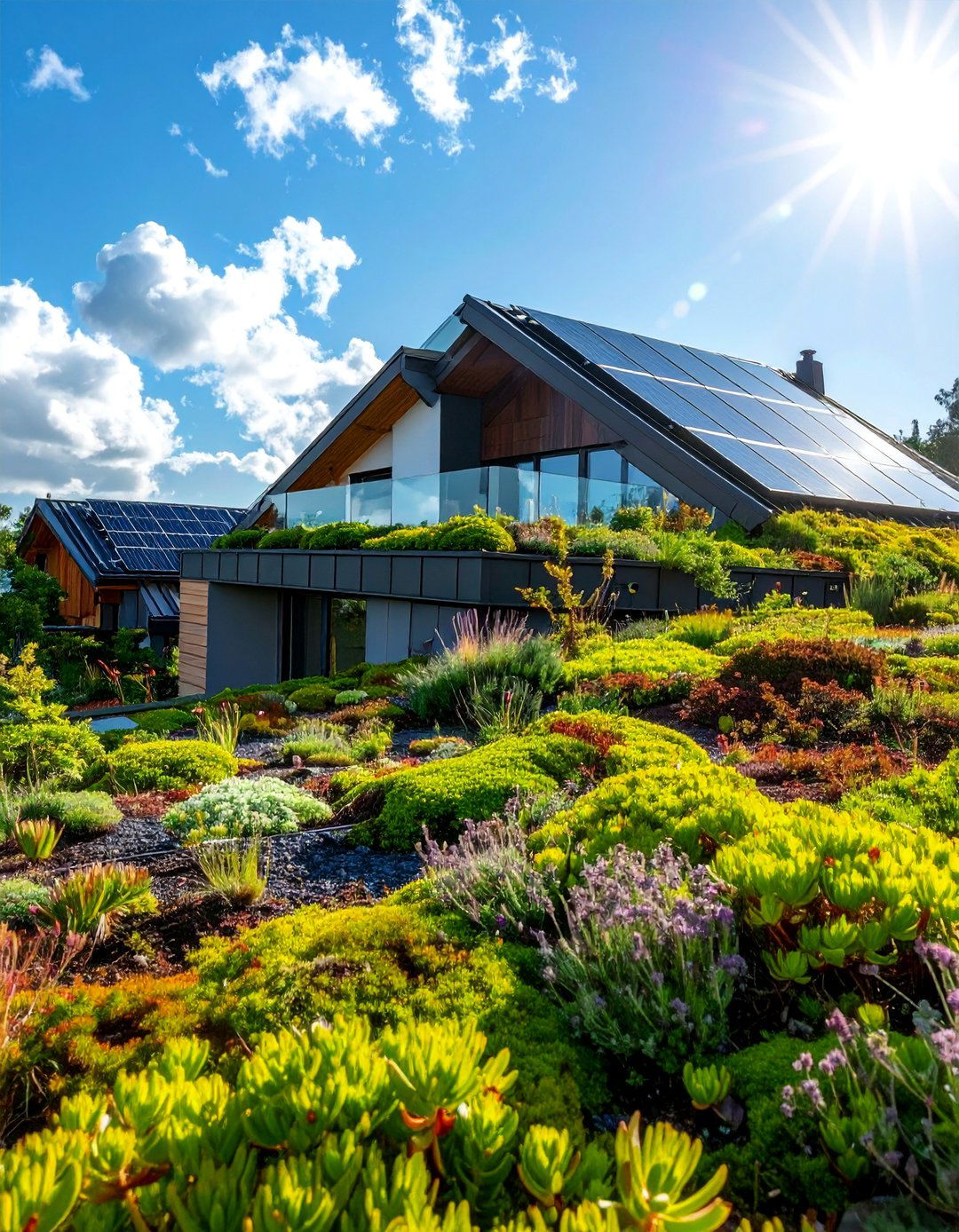
Combining a green roof with solar panels offers a powerful synergy for sustainable living. This hybrid system, often called a "biosolar" roof, maximizes a single surface for dual environmental benefits. The vegetation on the green roof helps to cool the surrounding air, which in turn improves the efficiency of the solar panels, as they operate best at cooler temperatures. The plants also reduce glare and protect the underlying roof membrane. This integrated approach provides renewable energy, superior insulation, stormwater management, and a biodiverse habitat all in one. It represents a forward-thinking solution for homeowners seeking to maximize their property’s eco-friendly potential.
Conclusion:
Houses with green roofs are more than just a trend; they are a practical and beautiful step toward a more sustainable future. From urban townhouses to rustic cabins, these living surfaces offer a multitude of benefits, including reduced energy costs, improved air quality, and enhanced biodiversity. By transforming an often-overlooked architectural element into a thriving ecosystem, green roofs allow us to build homes that are not only shelters but also active contributors to environmental health. They represent a powerful fusion of nature and design, proving that our living spaces can be both innovative and deeply connected to the natural world.

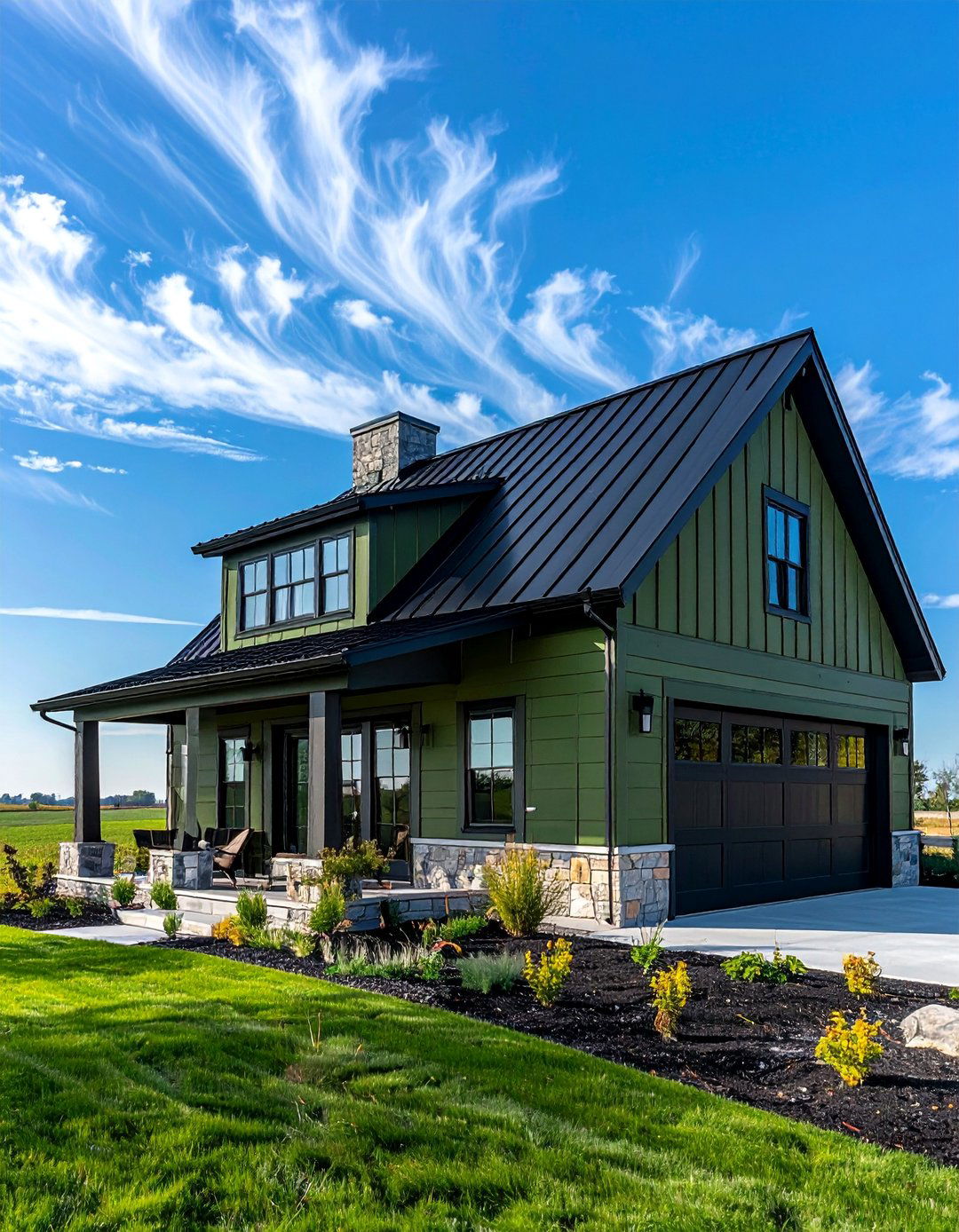
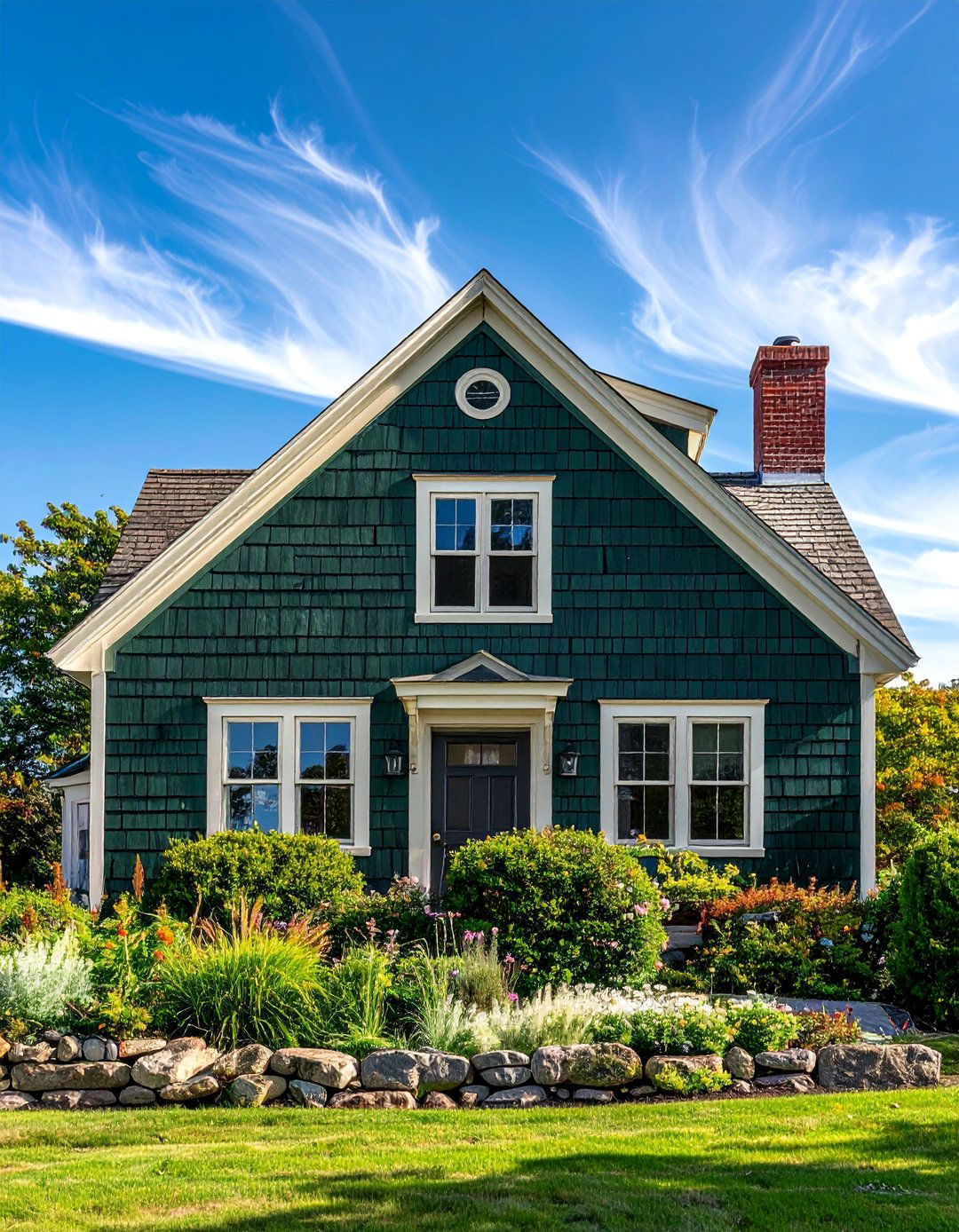
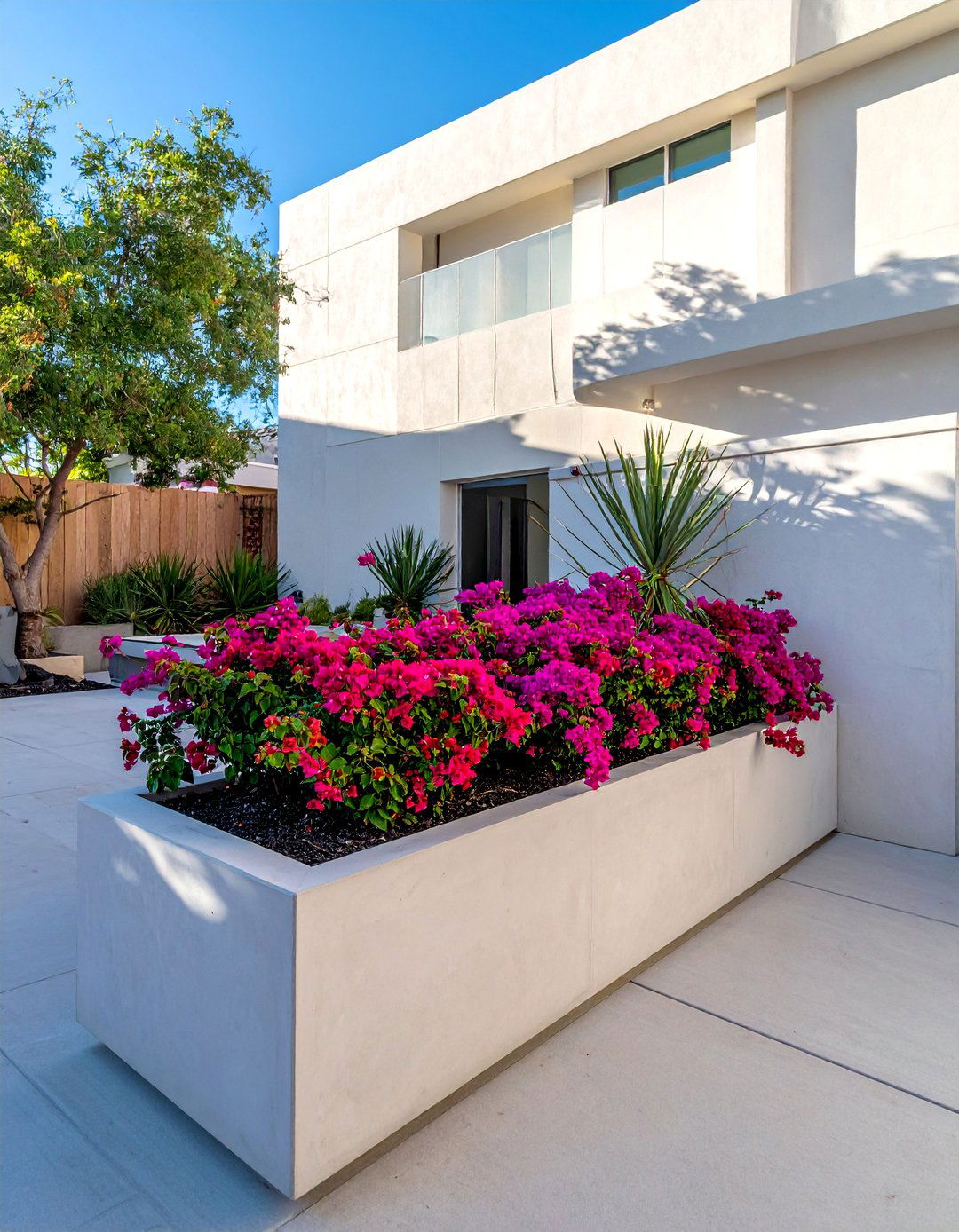
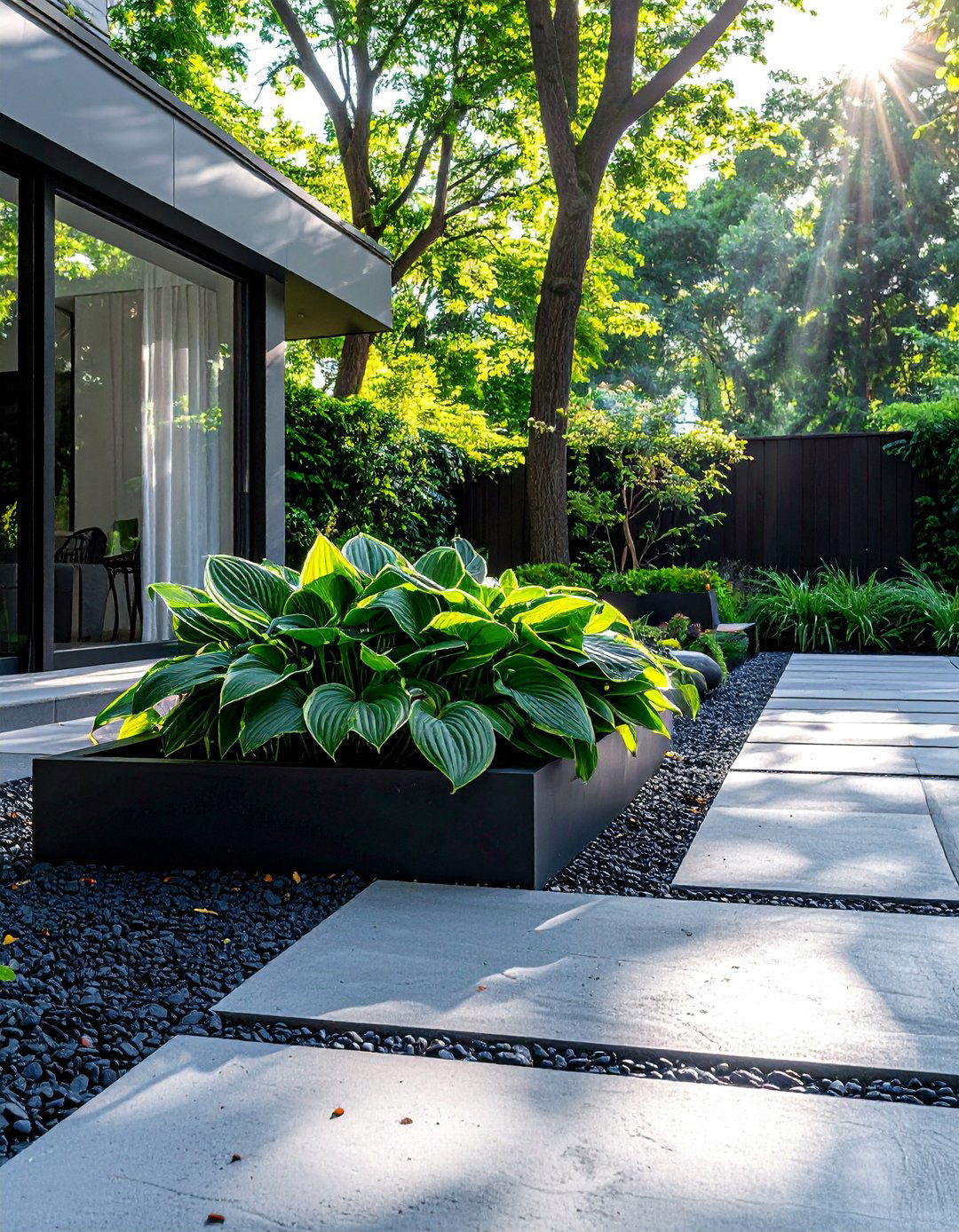
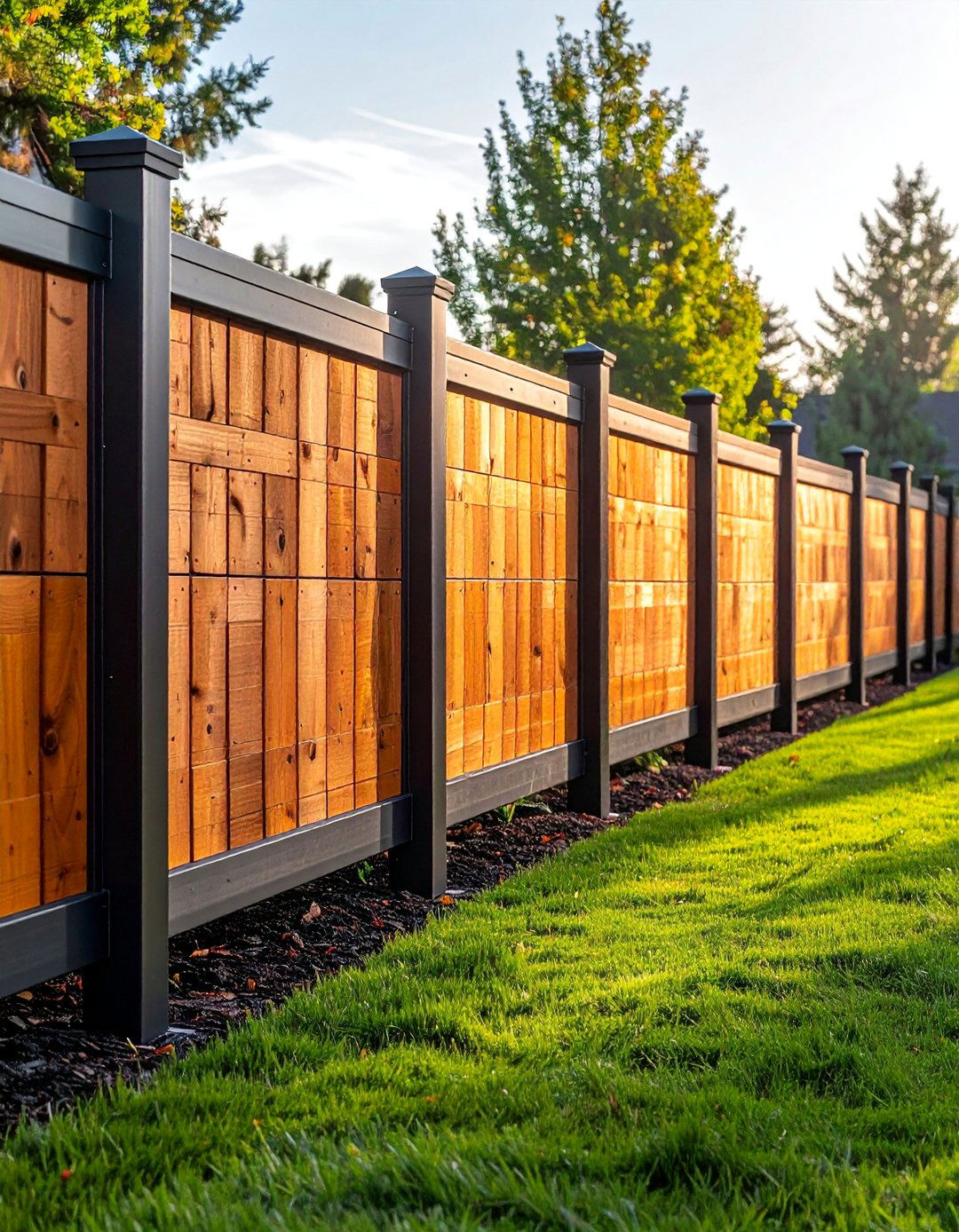
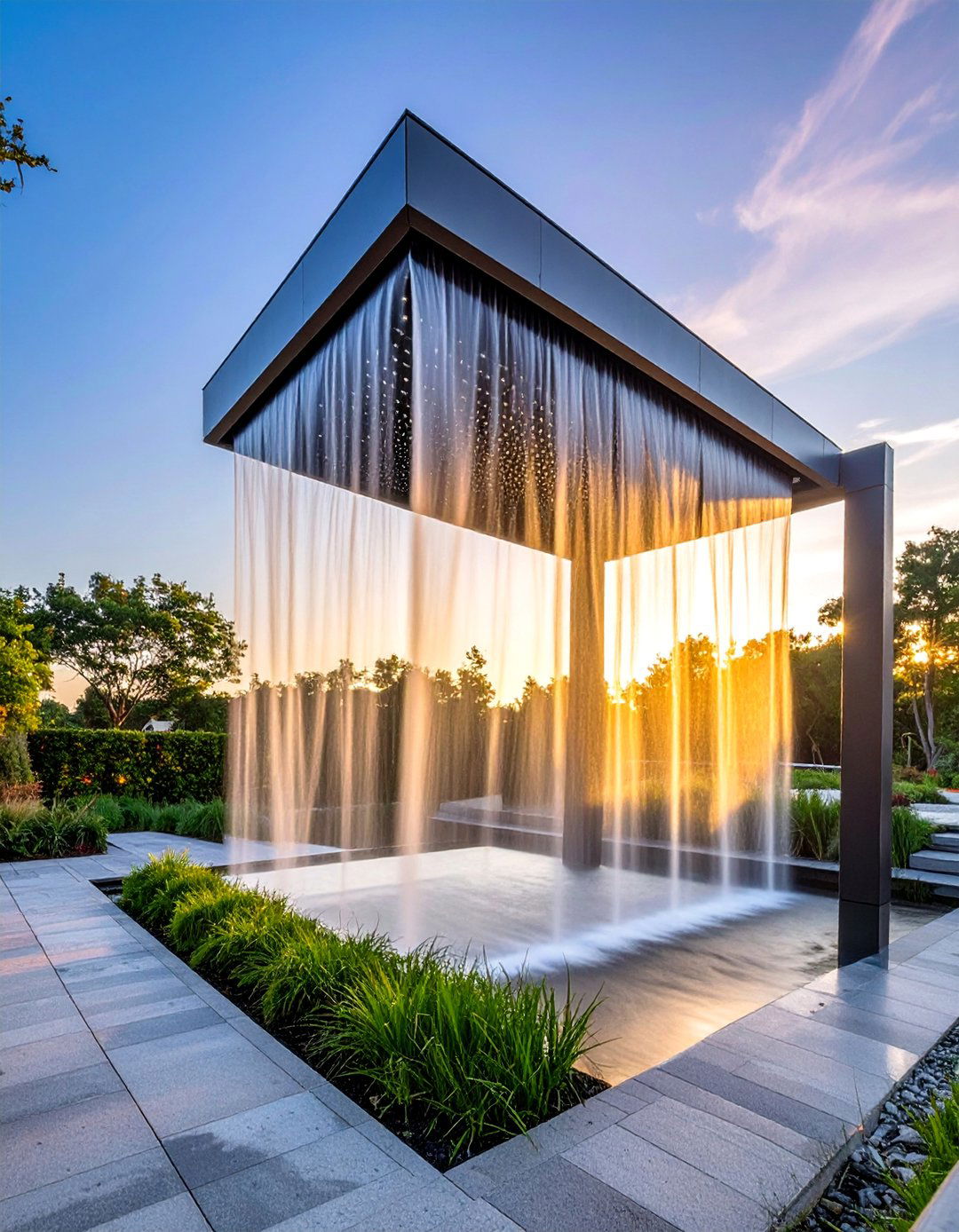
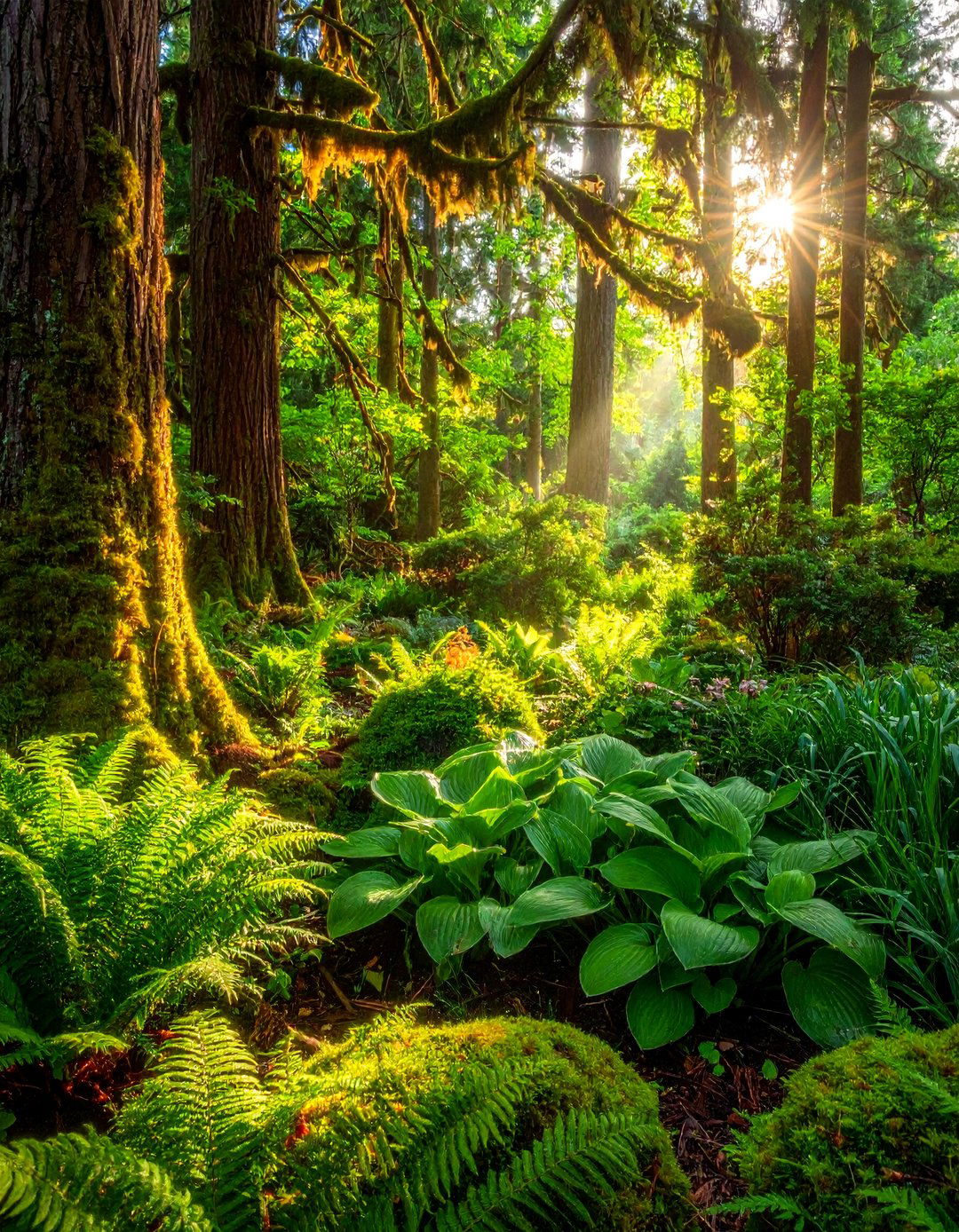
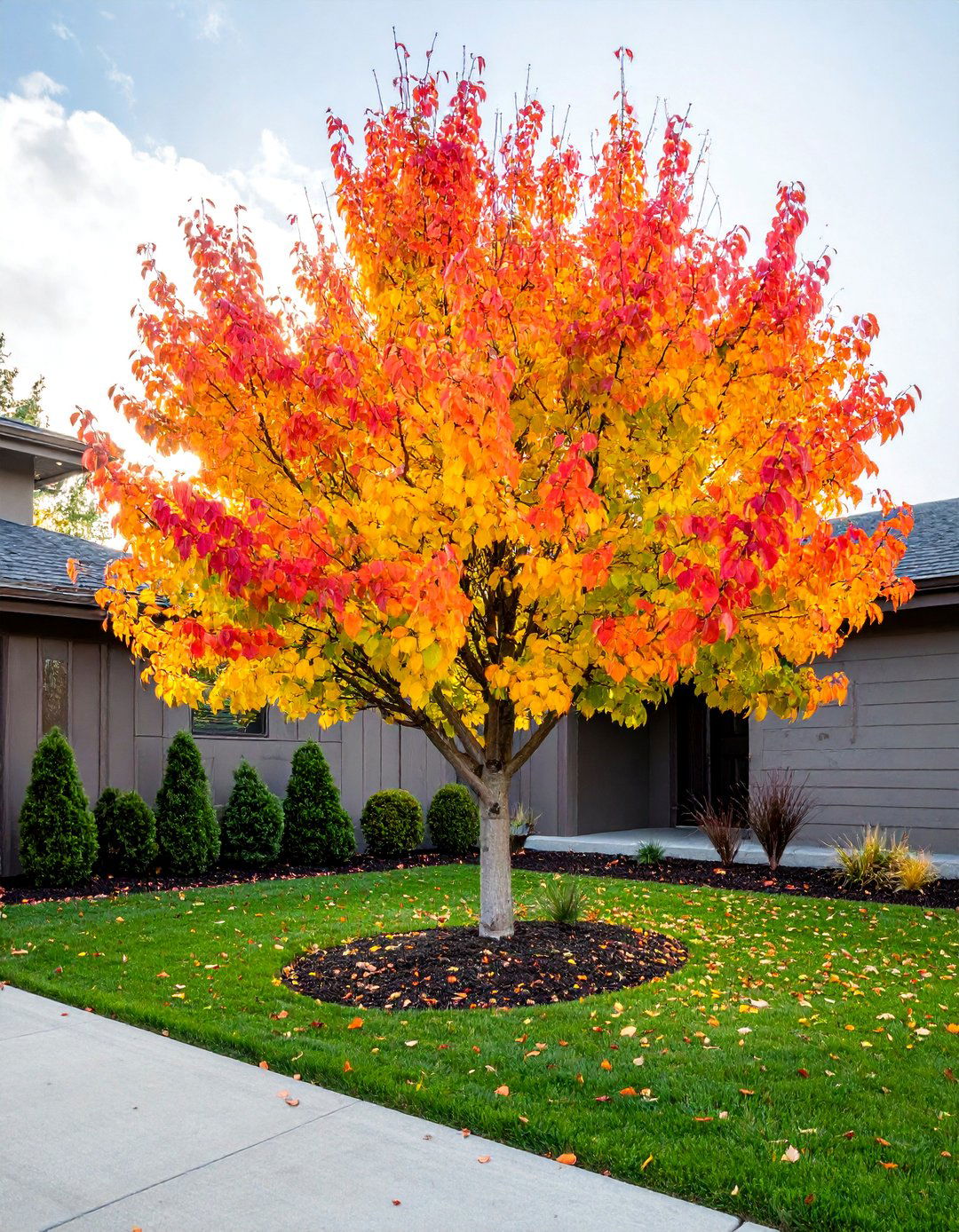
Leave a Reply